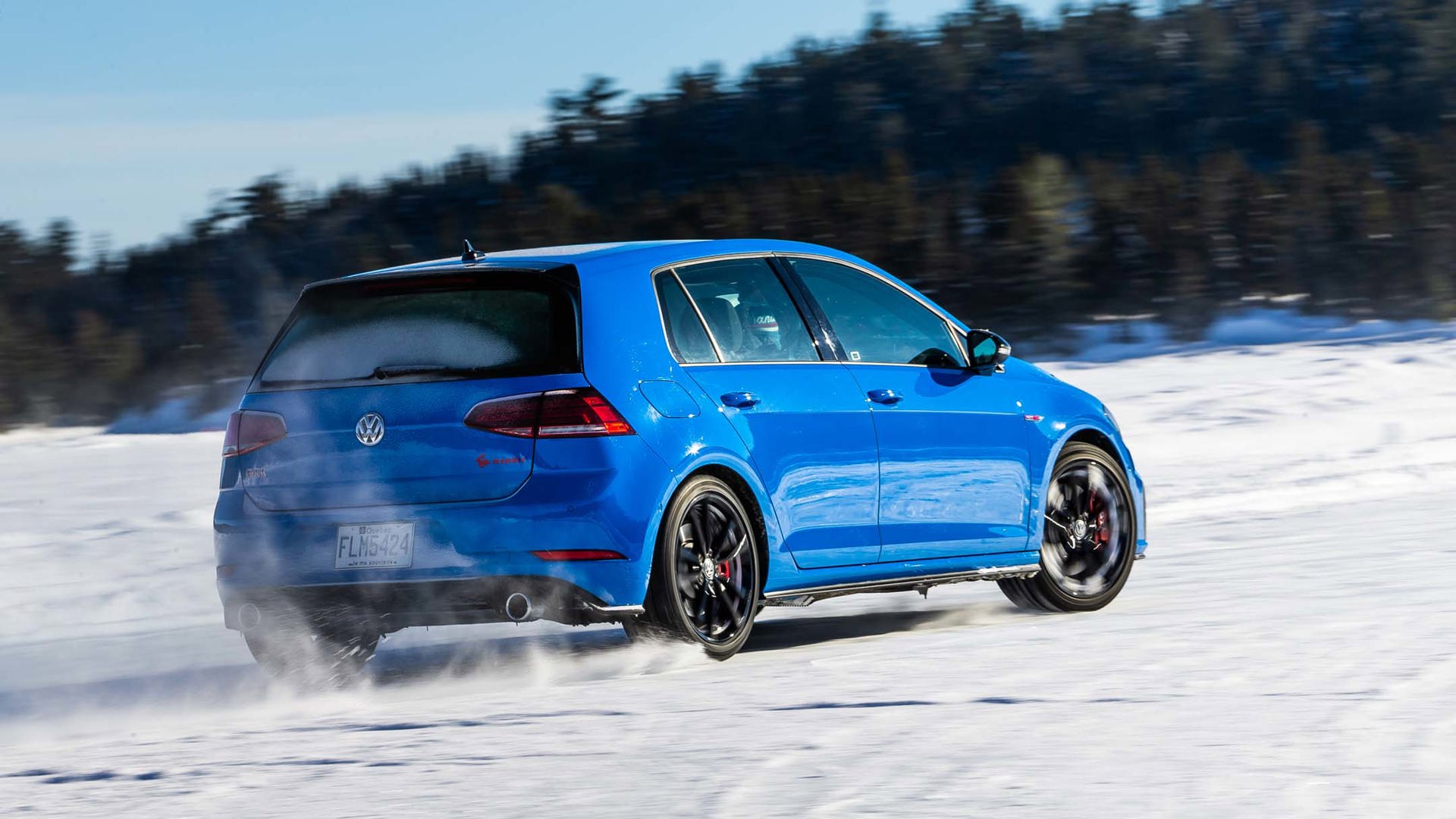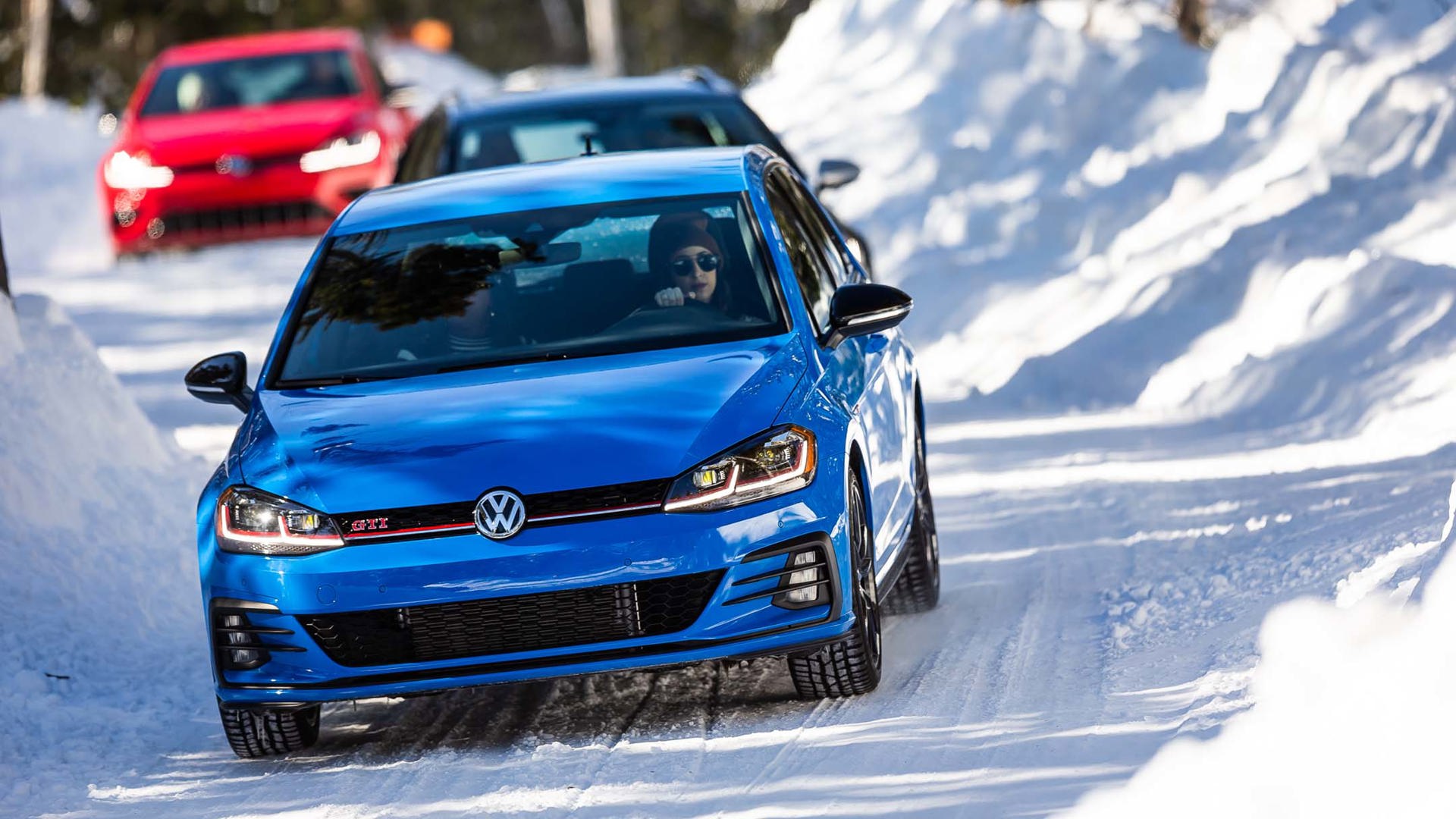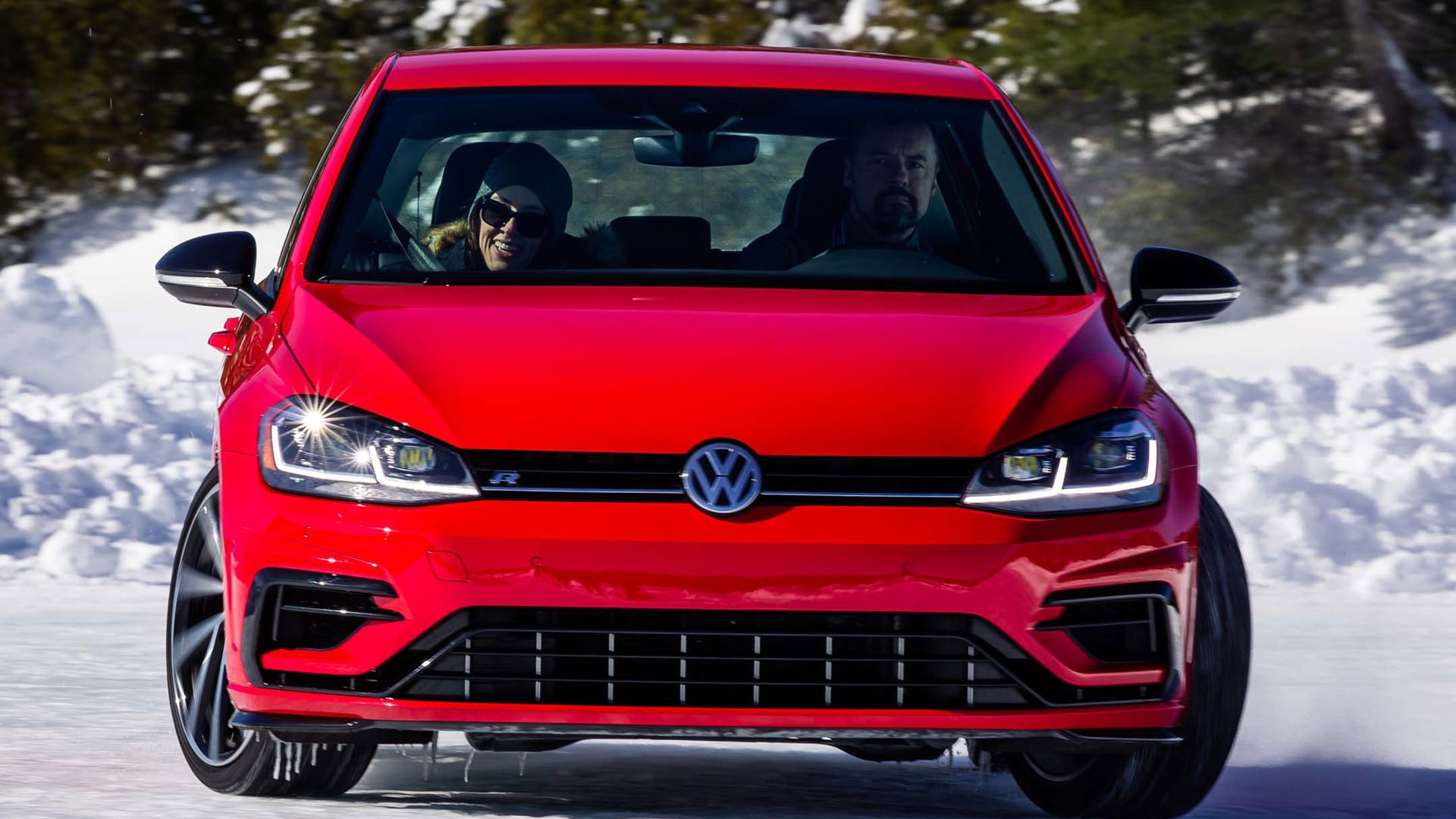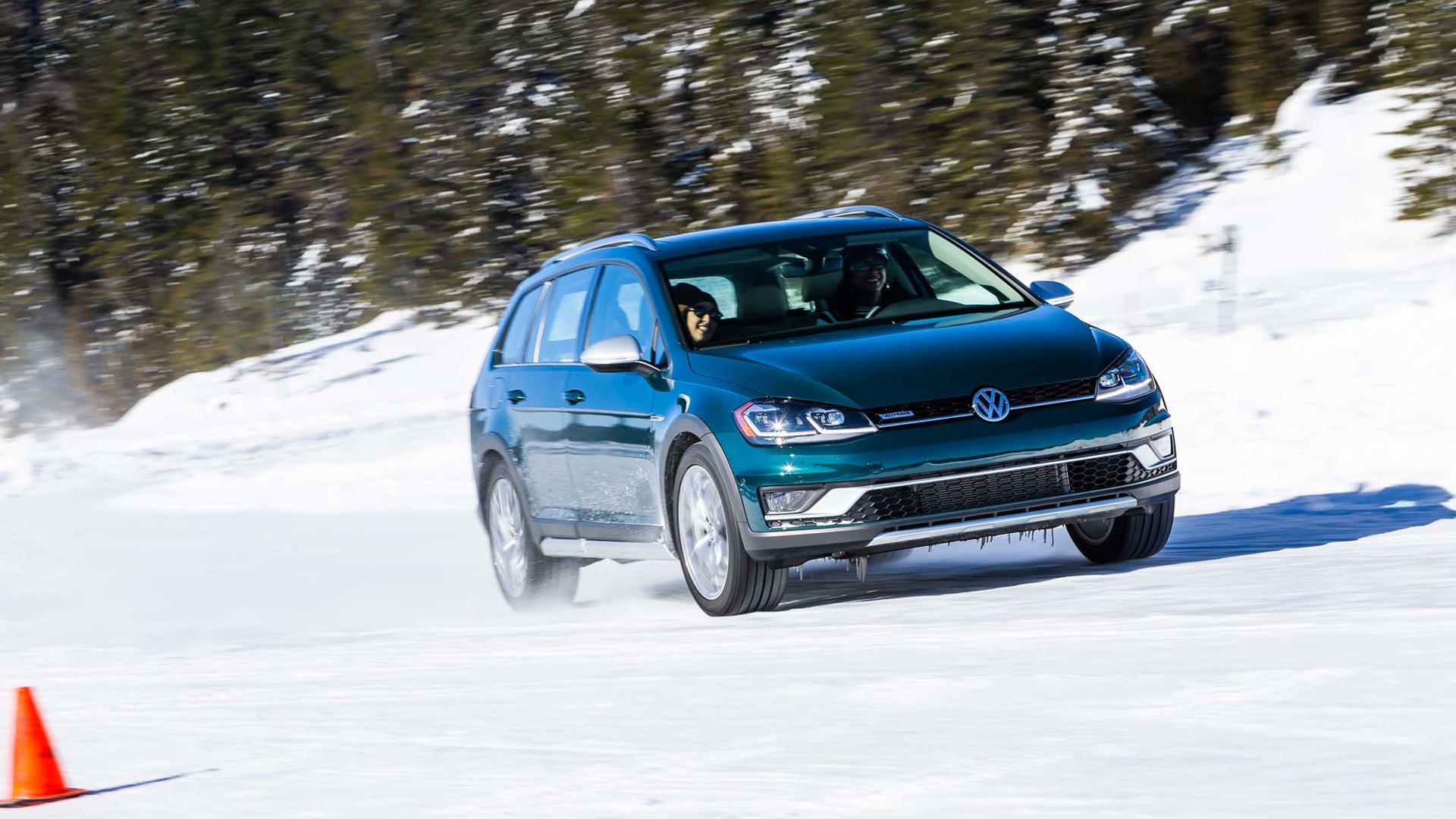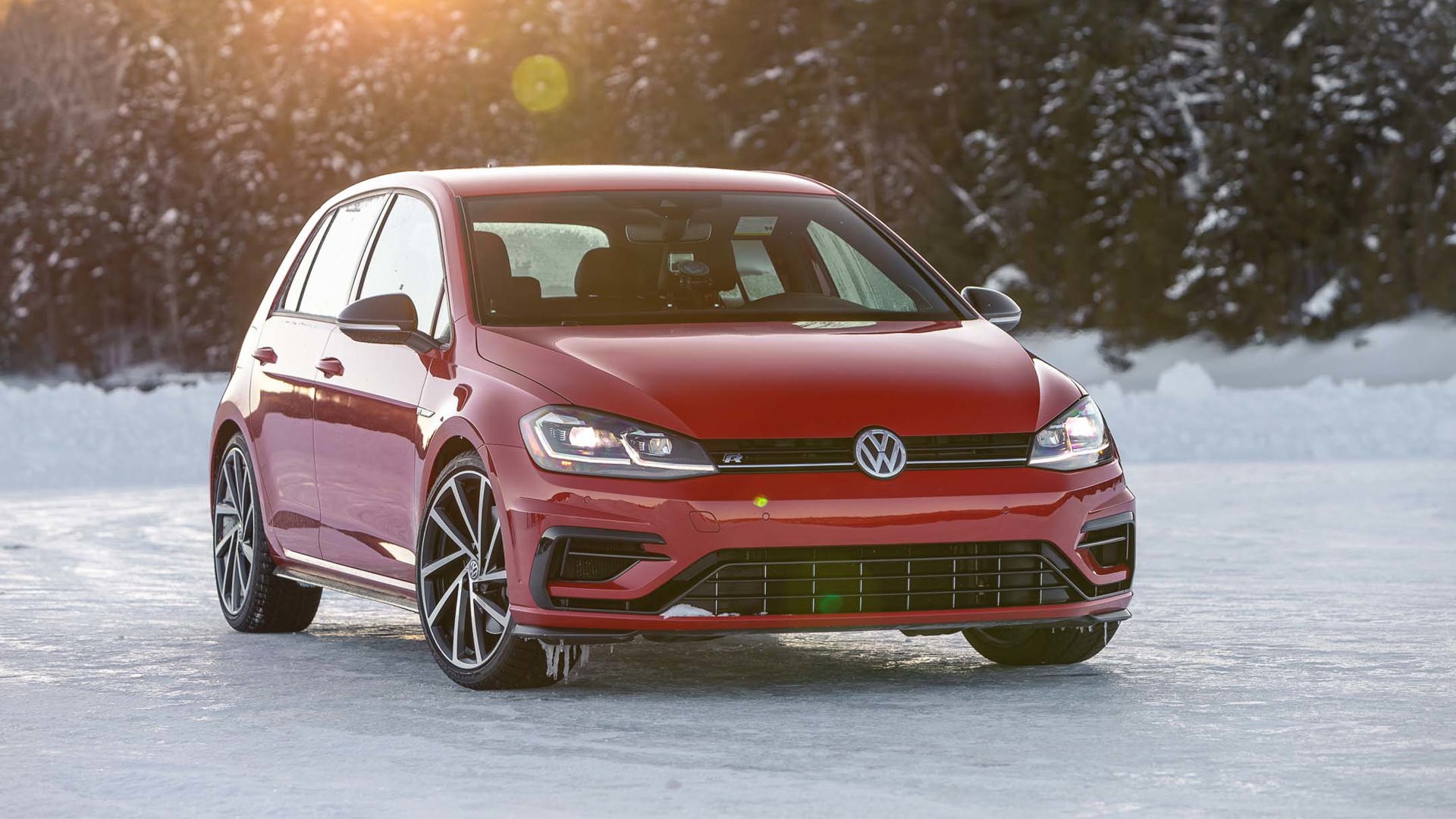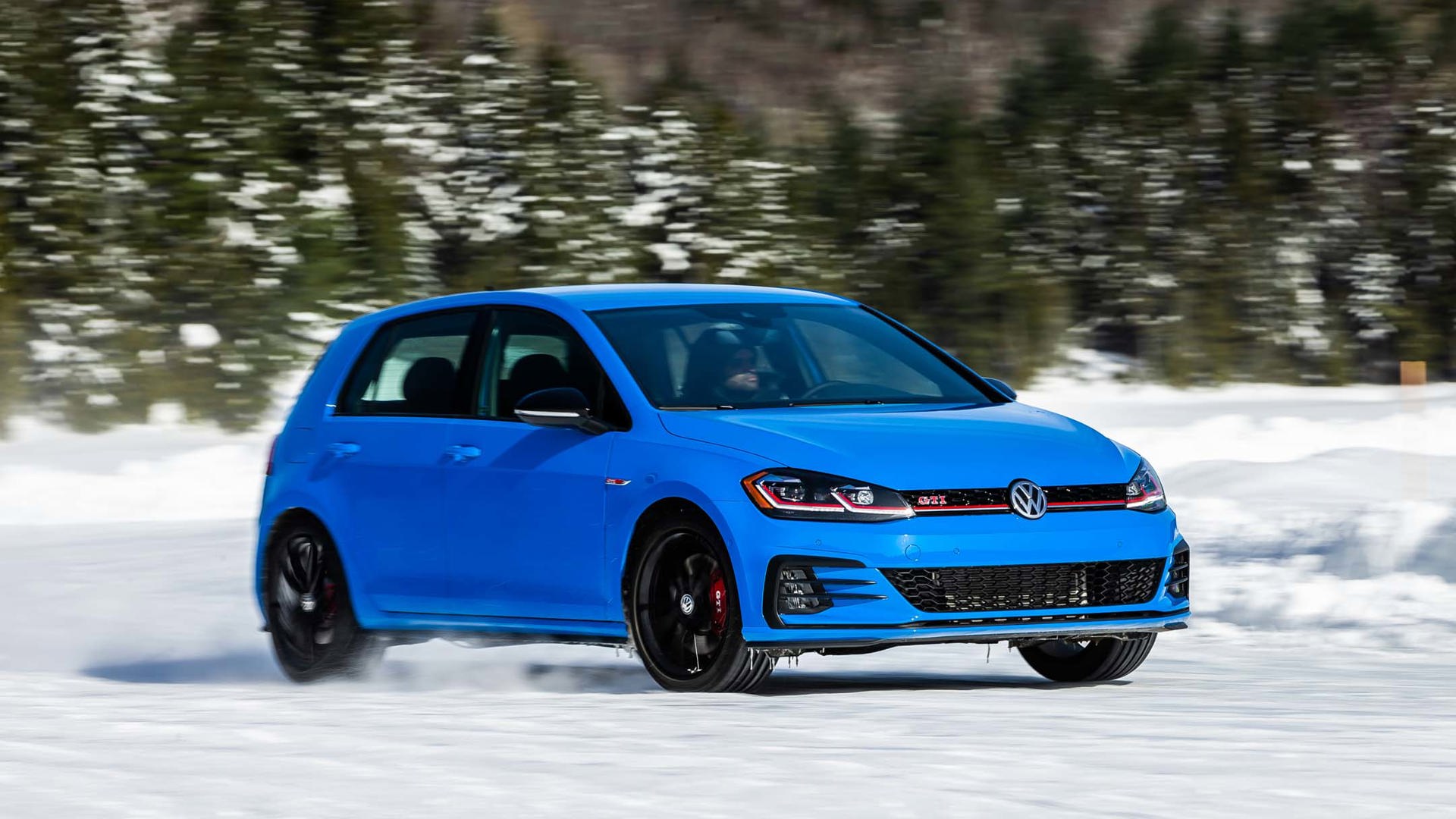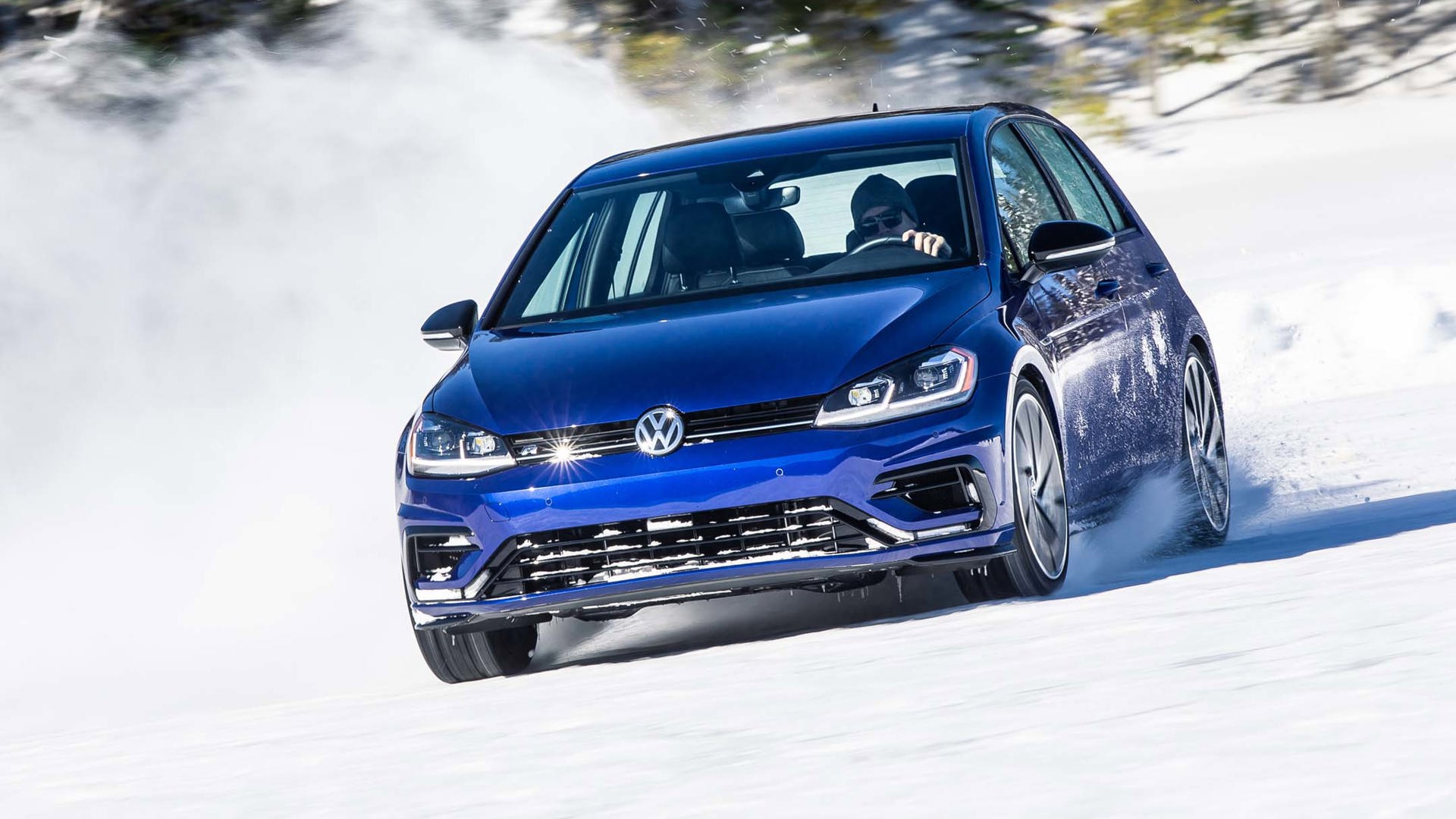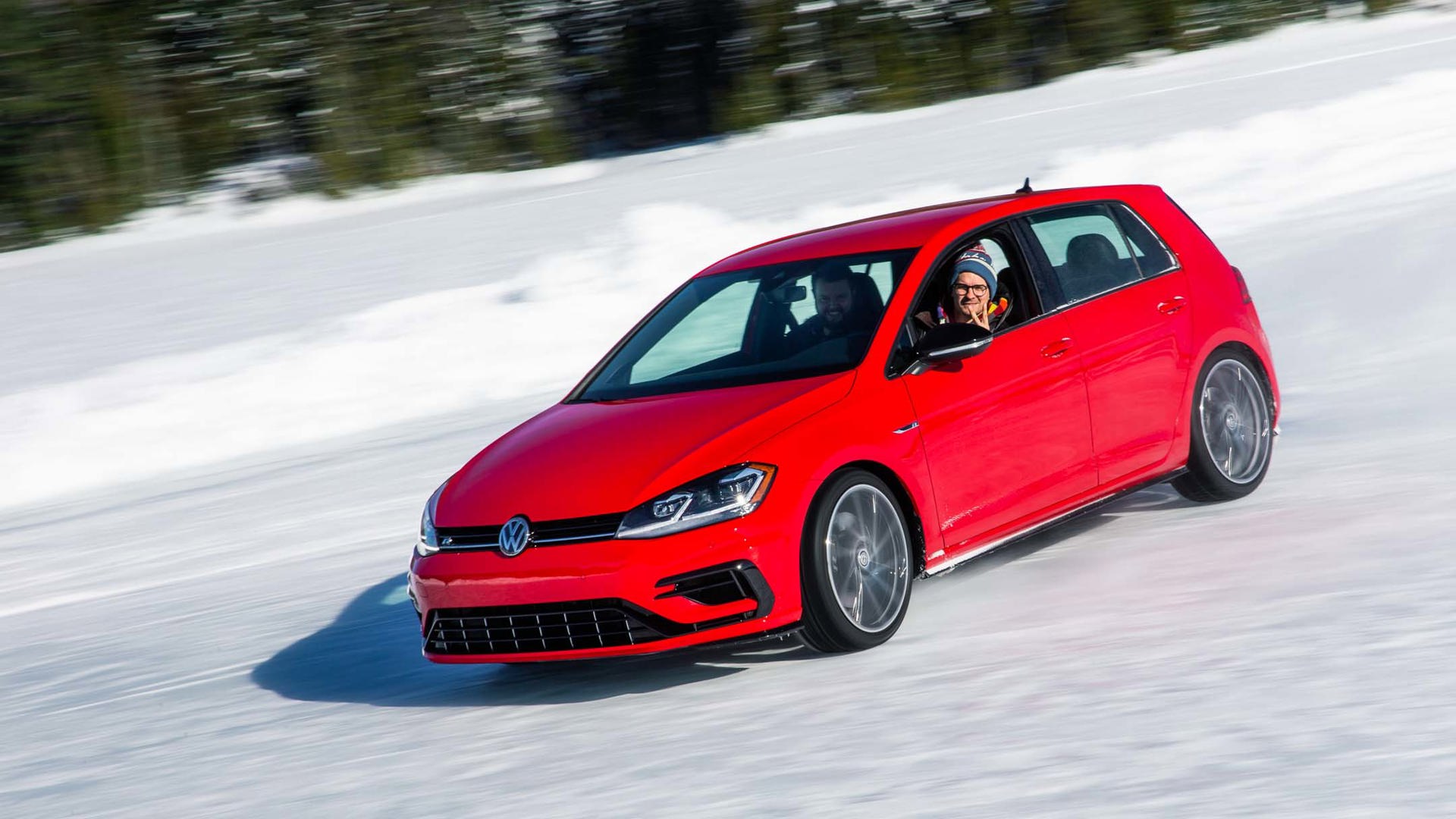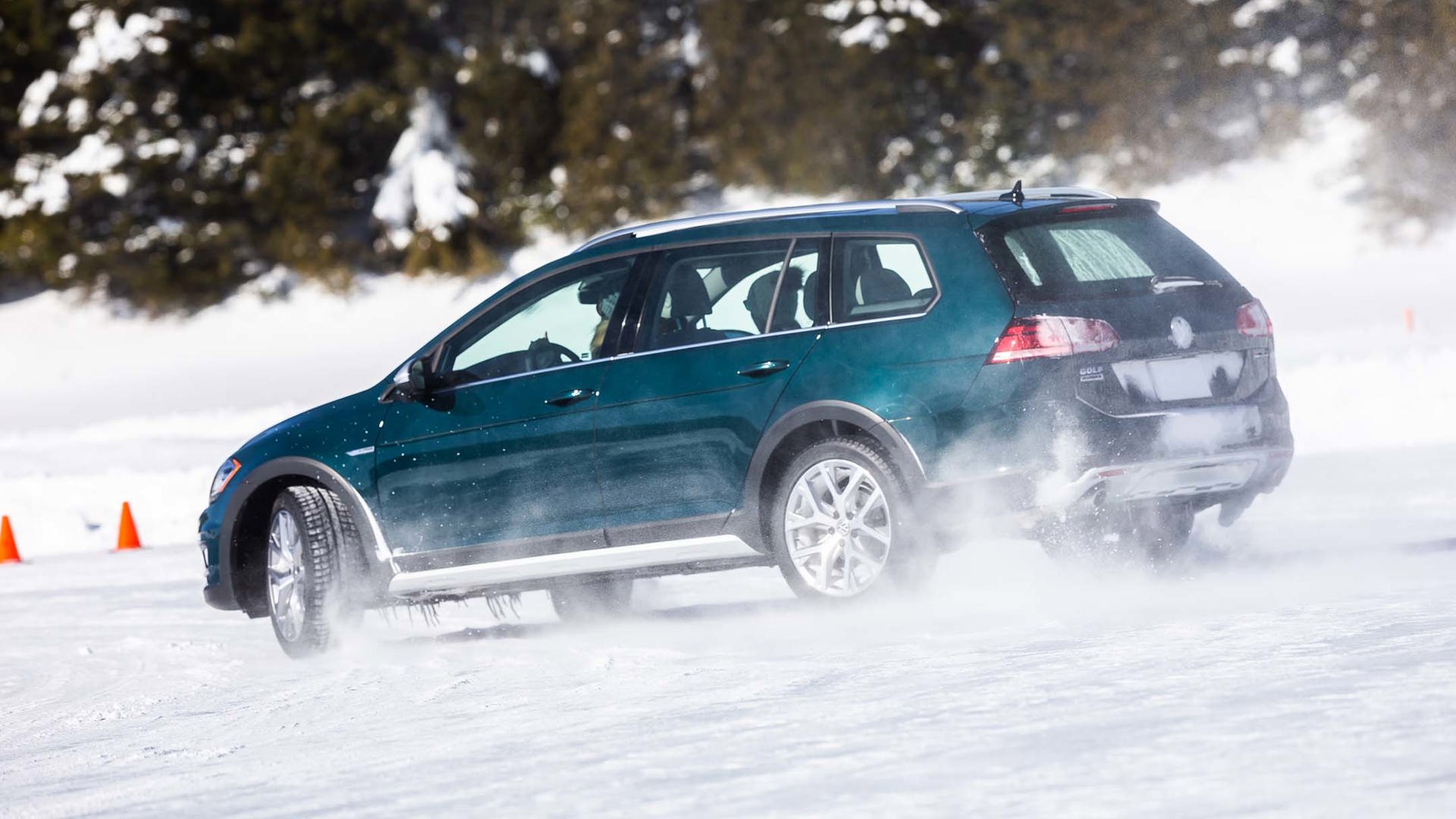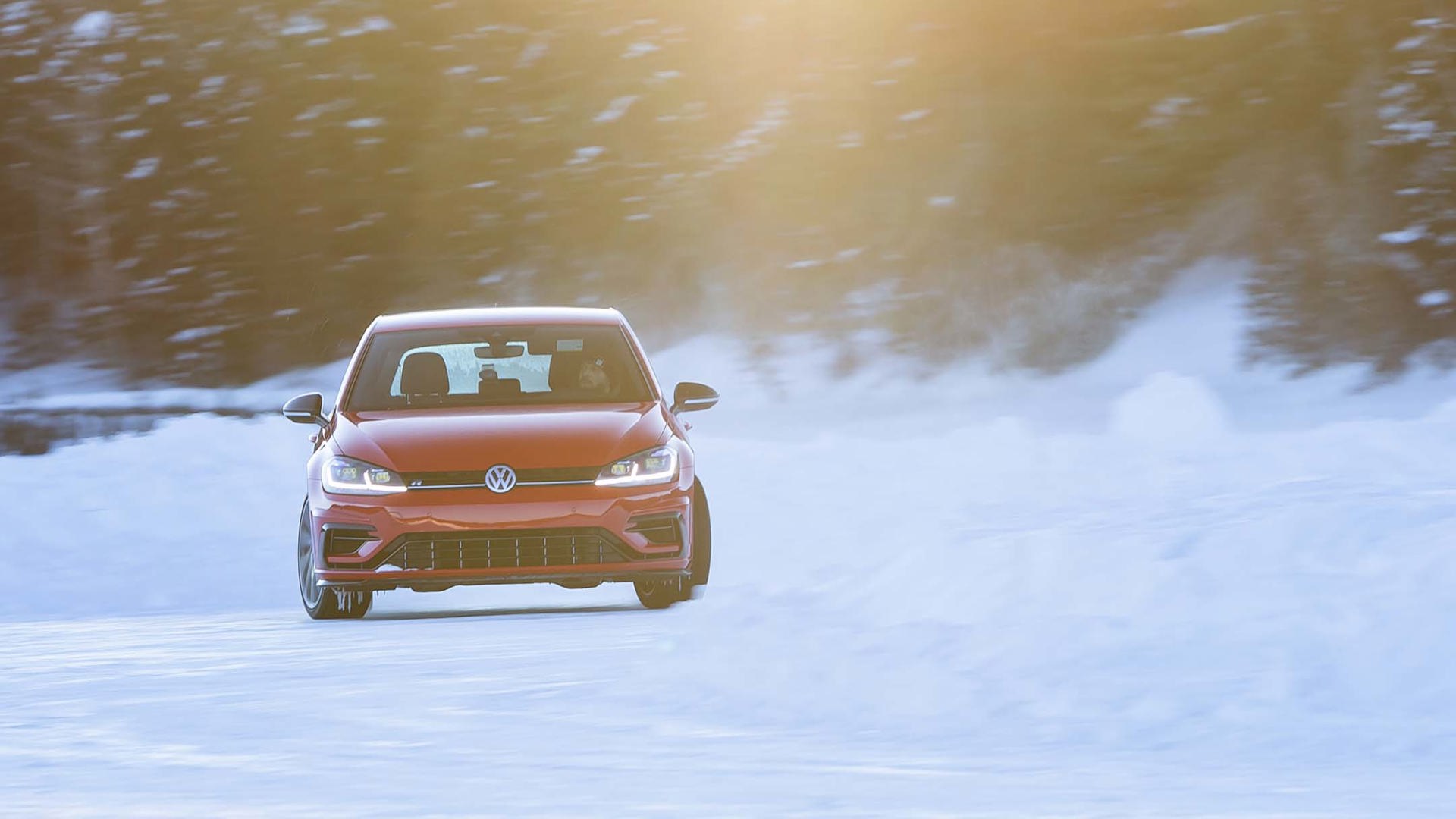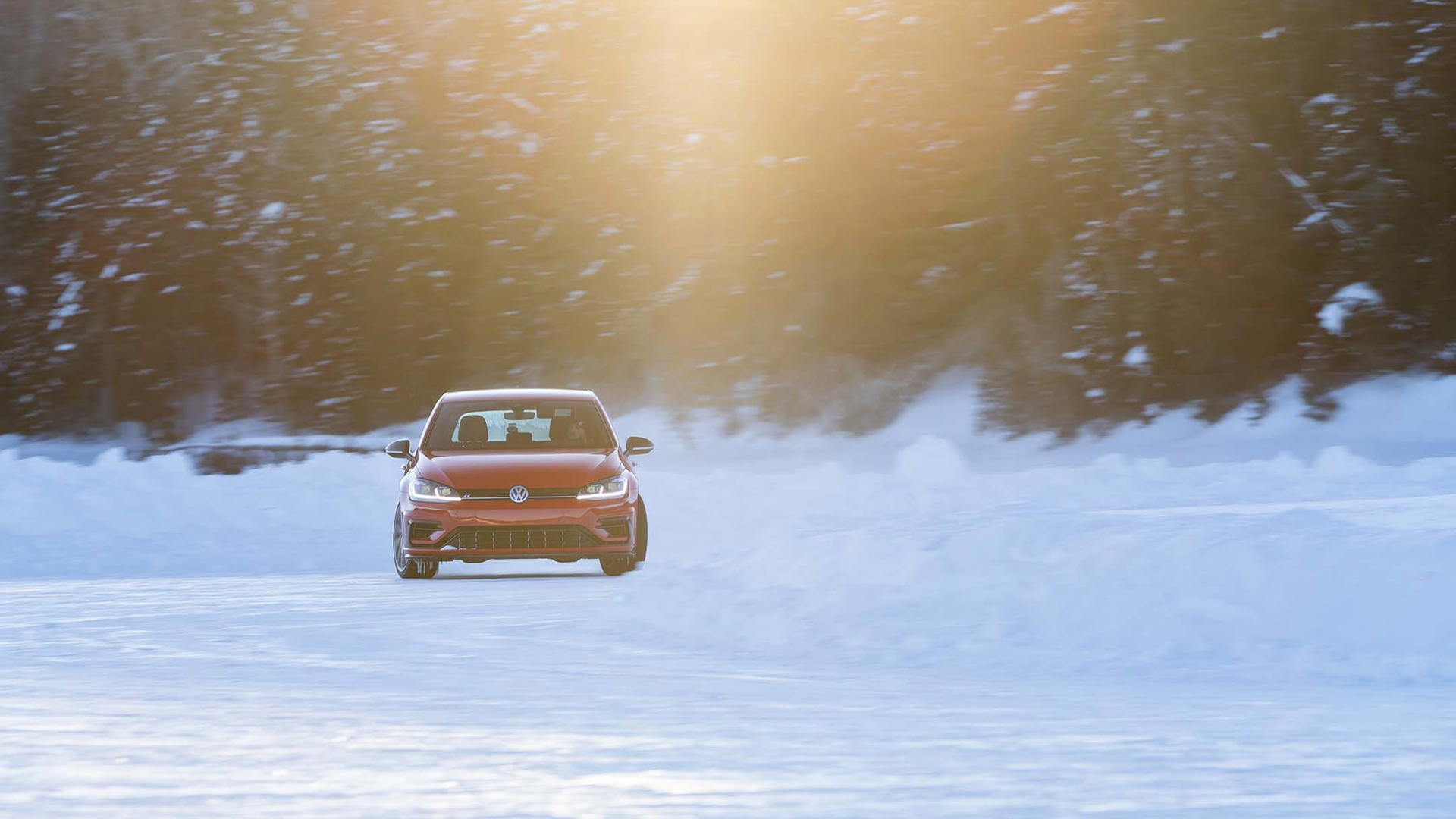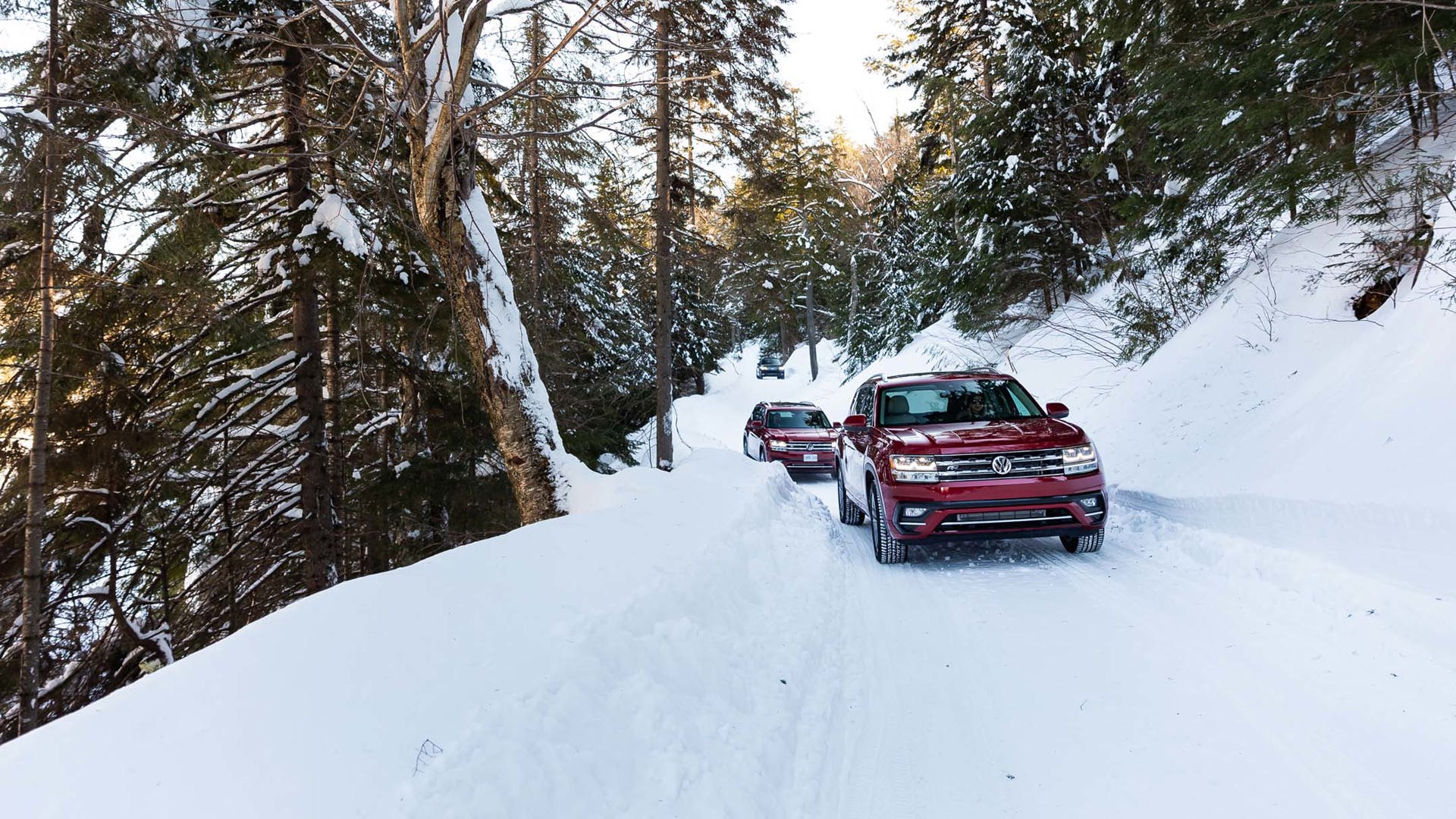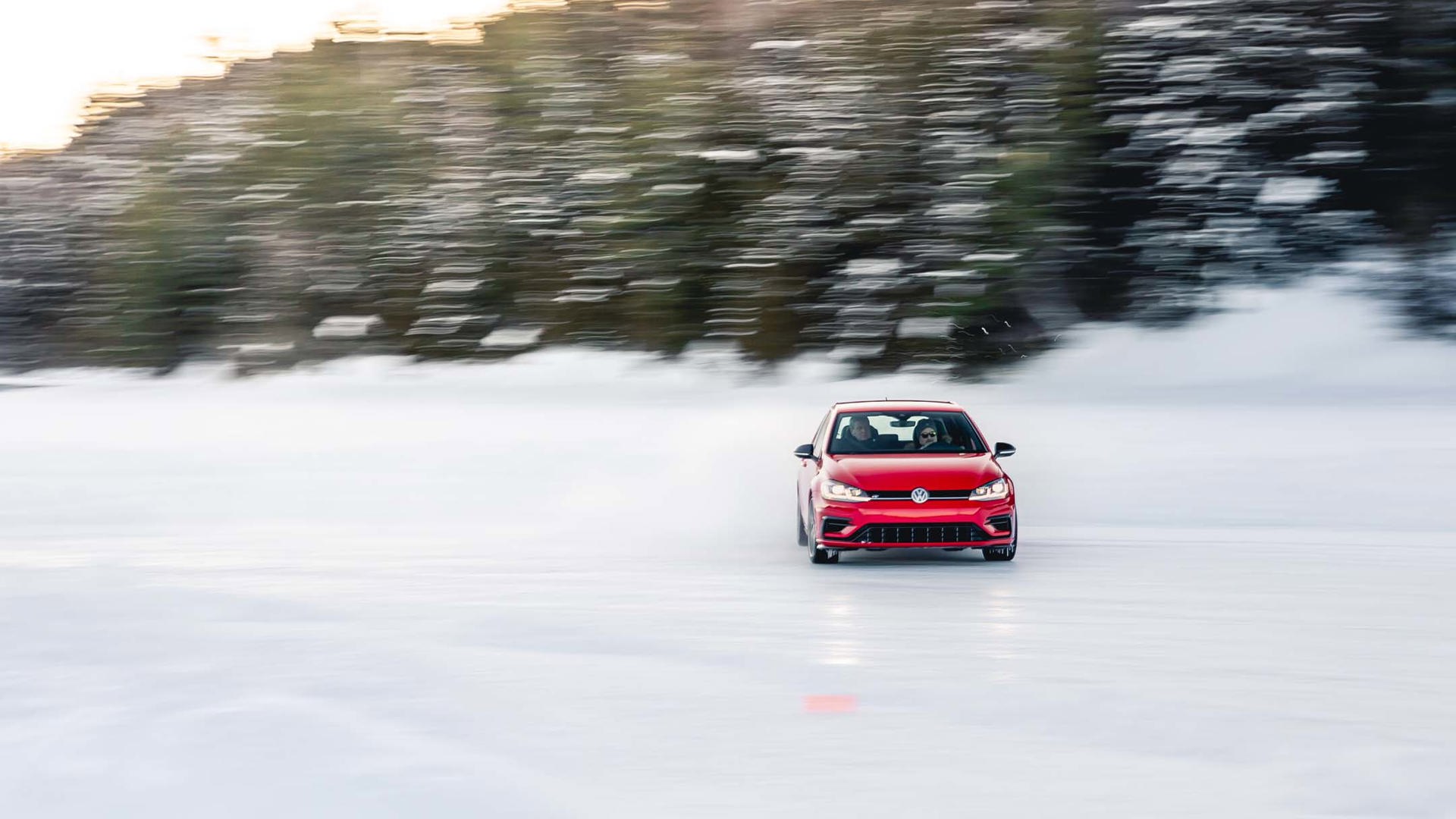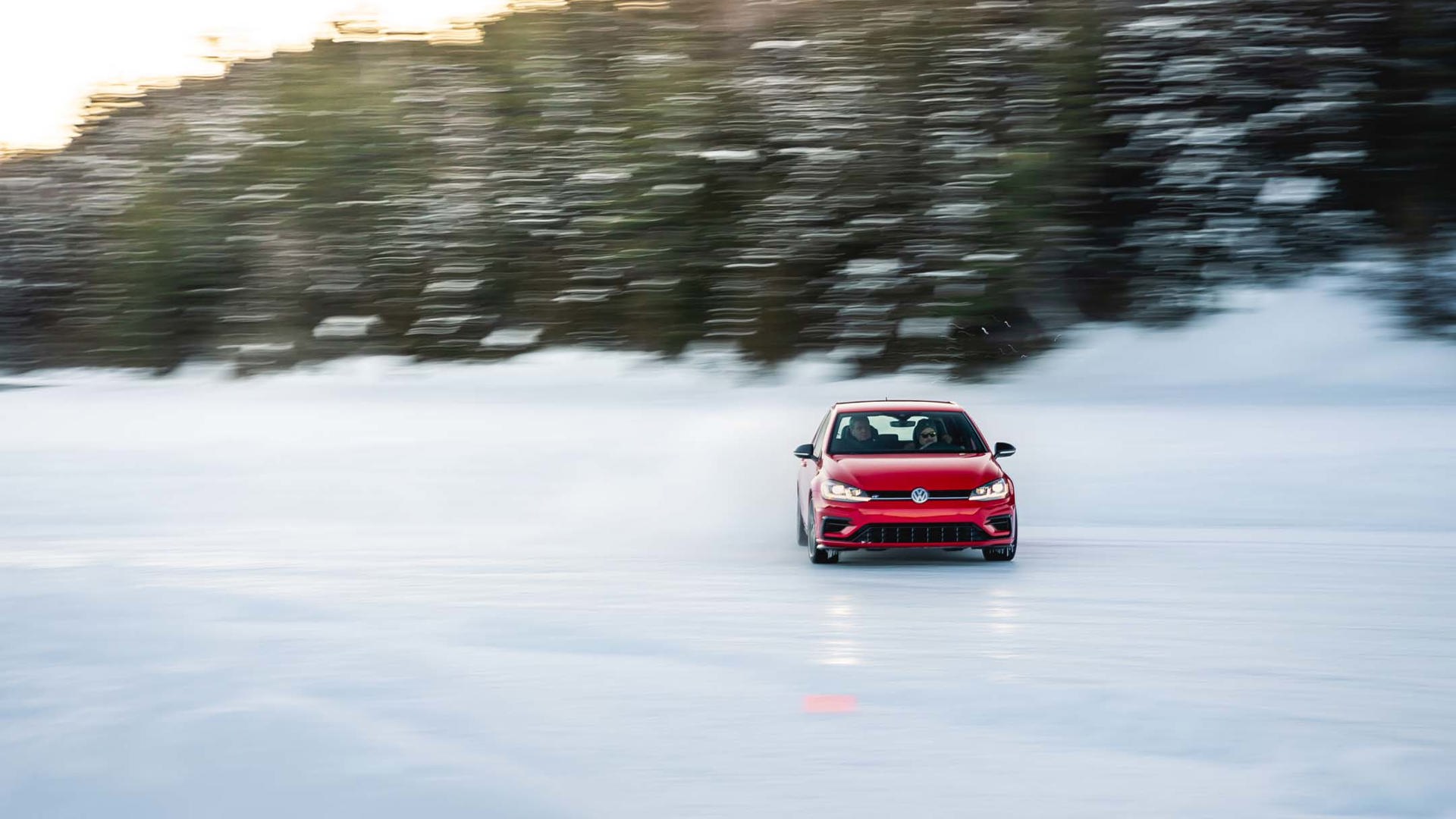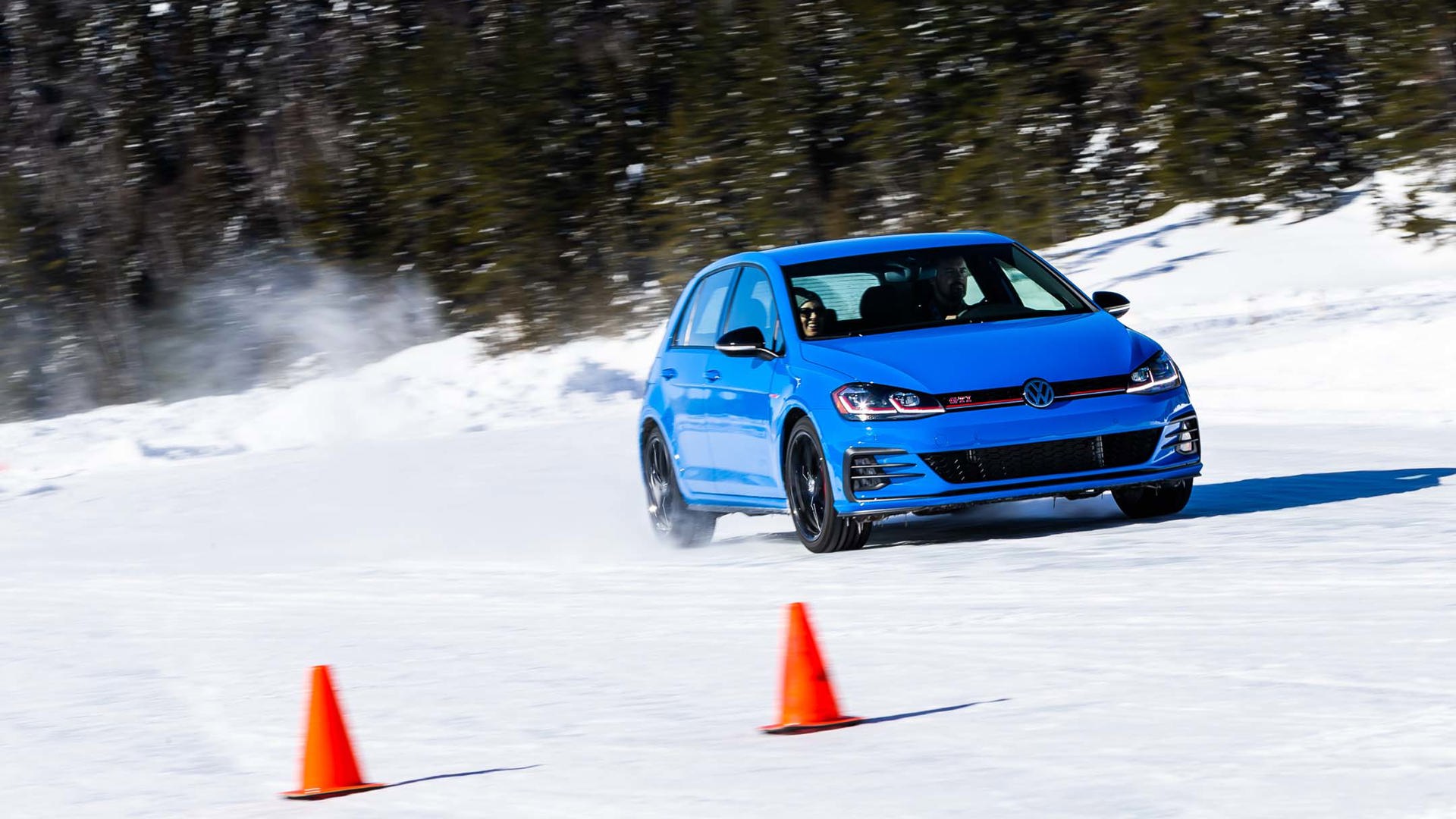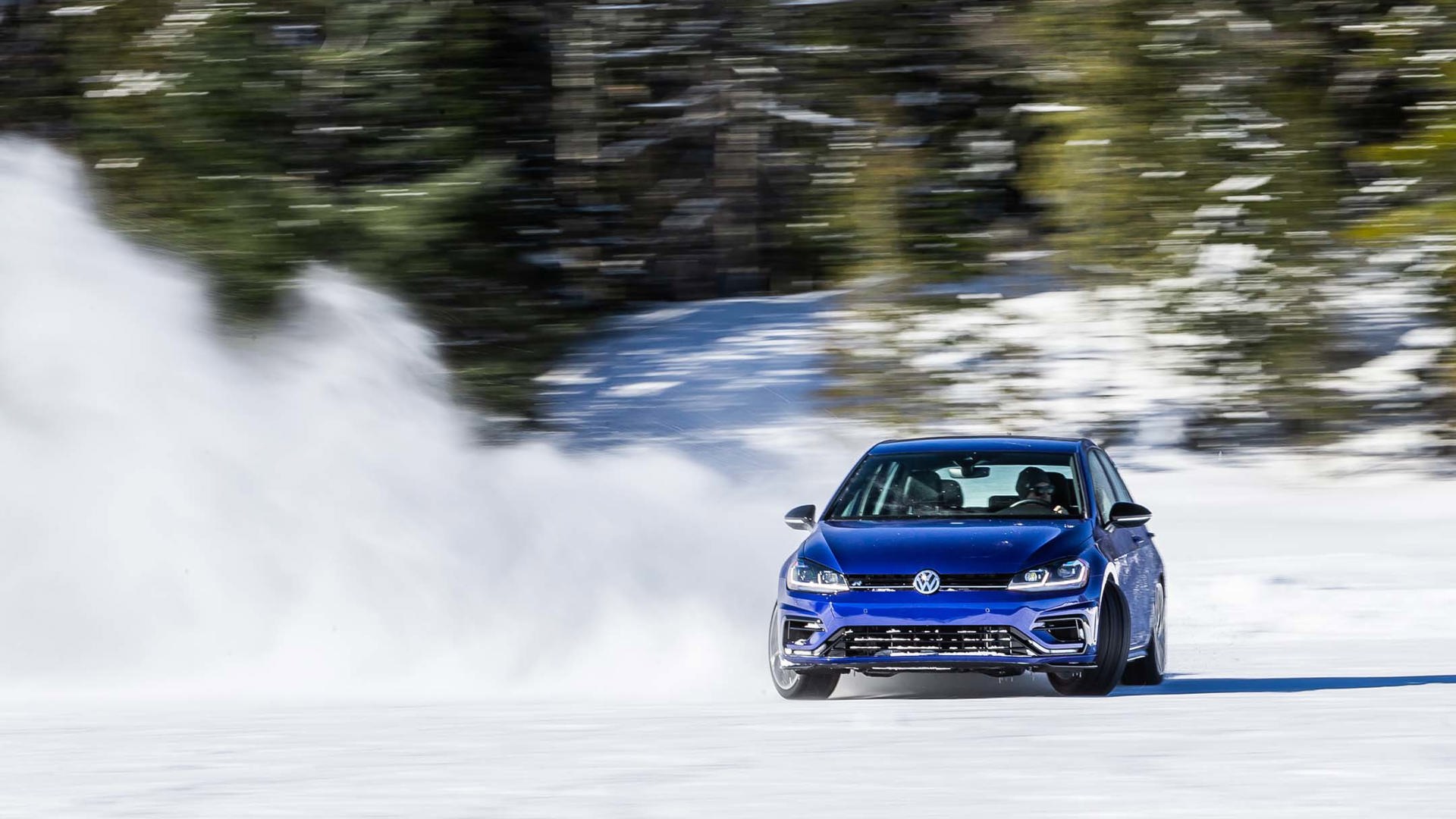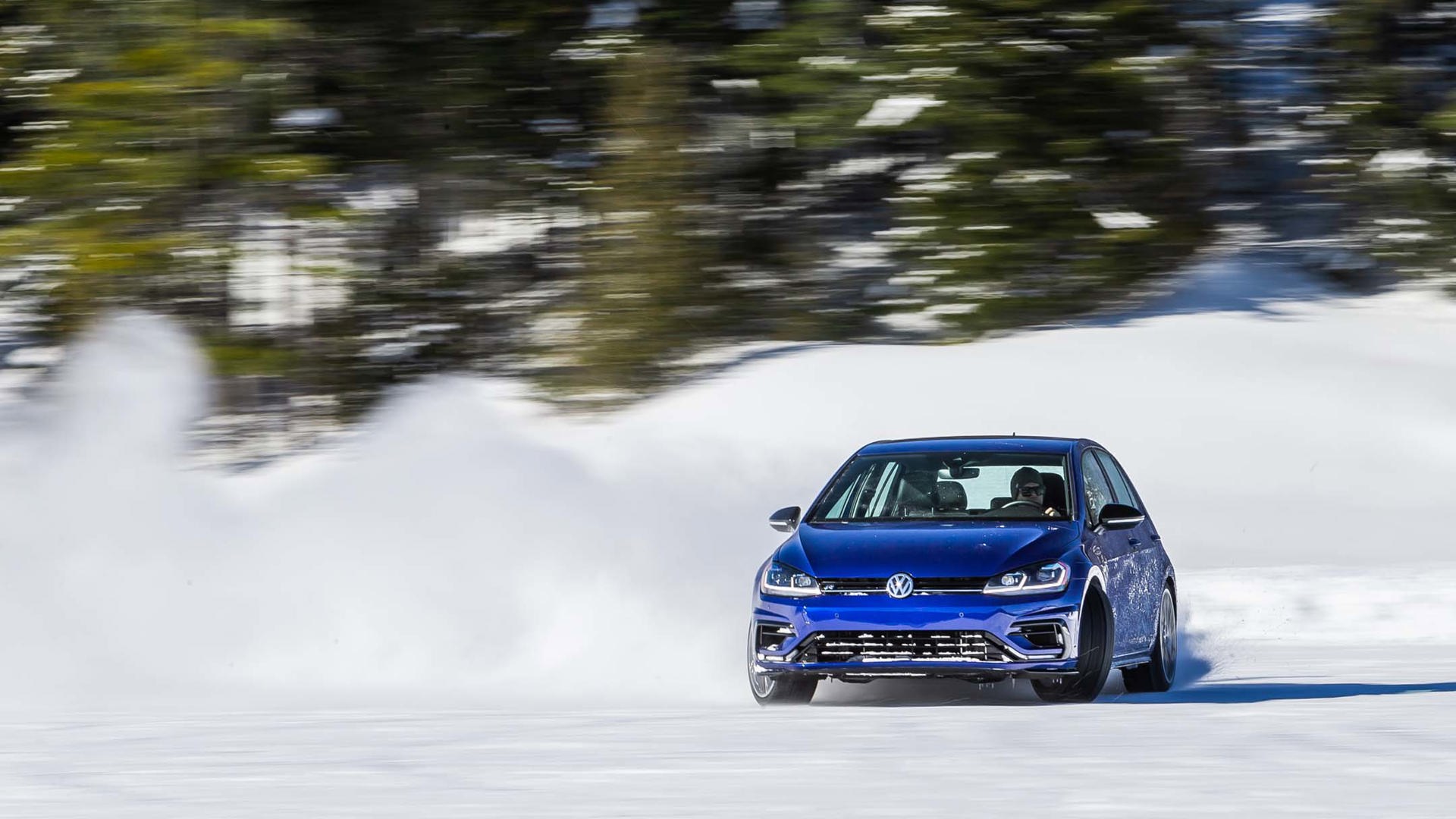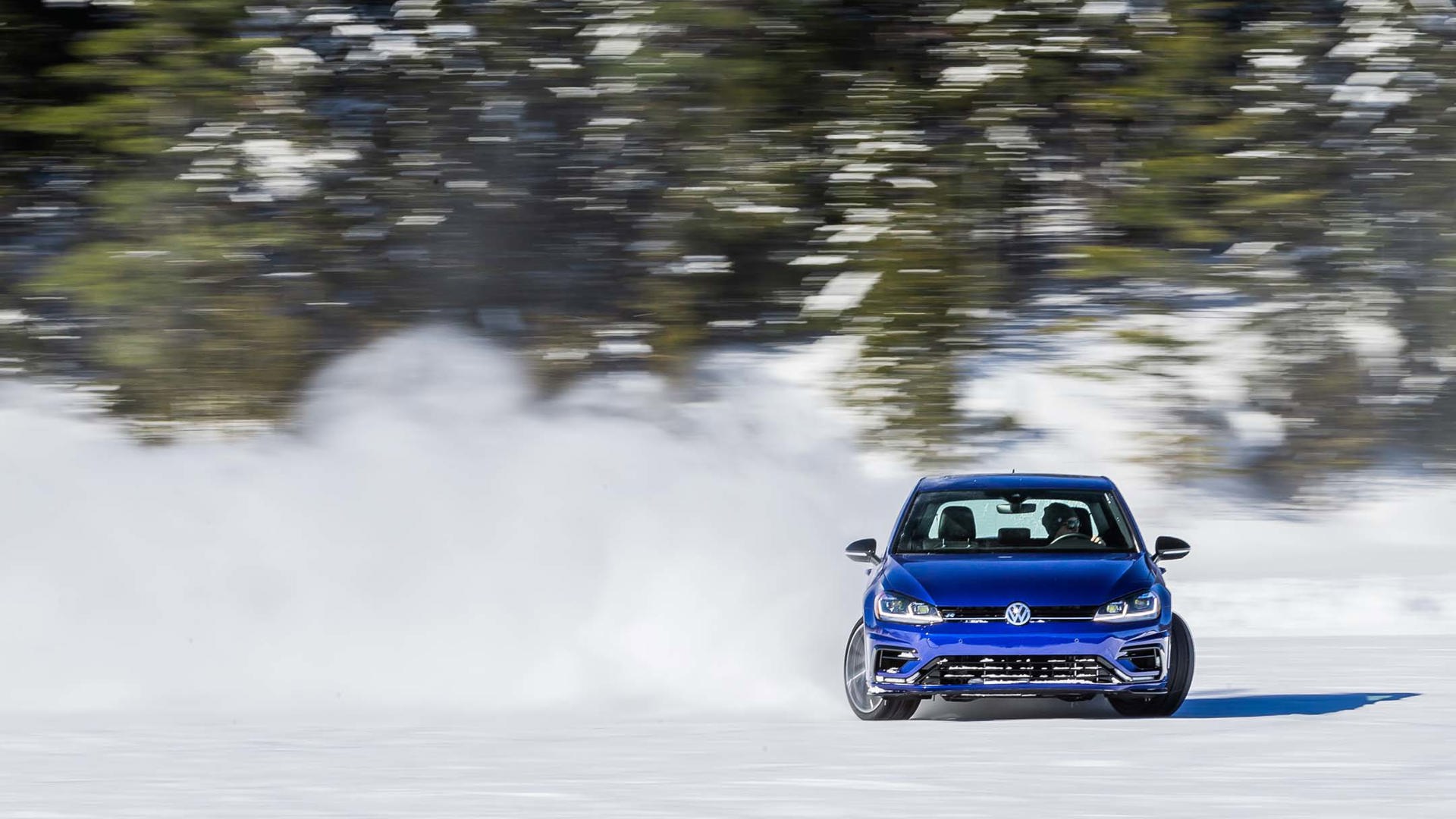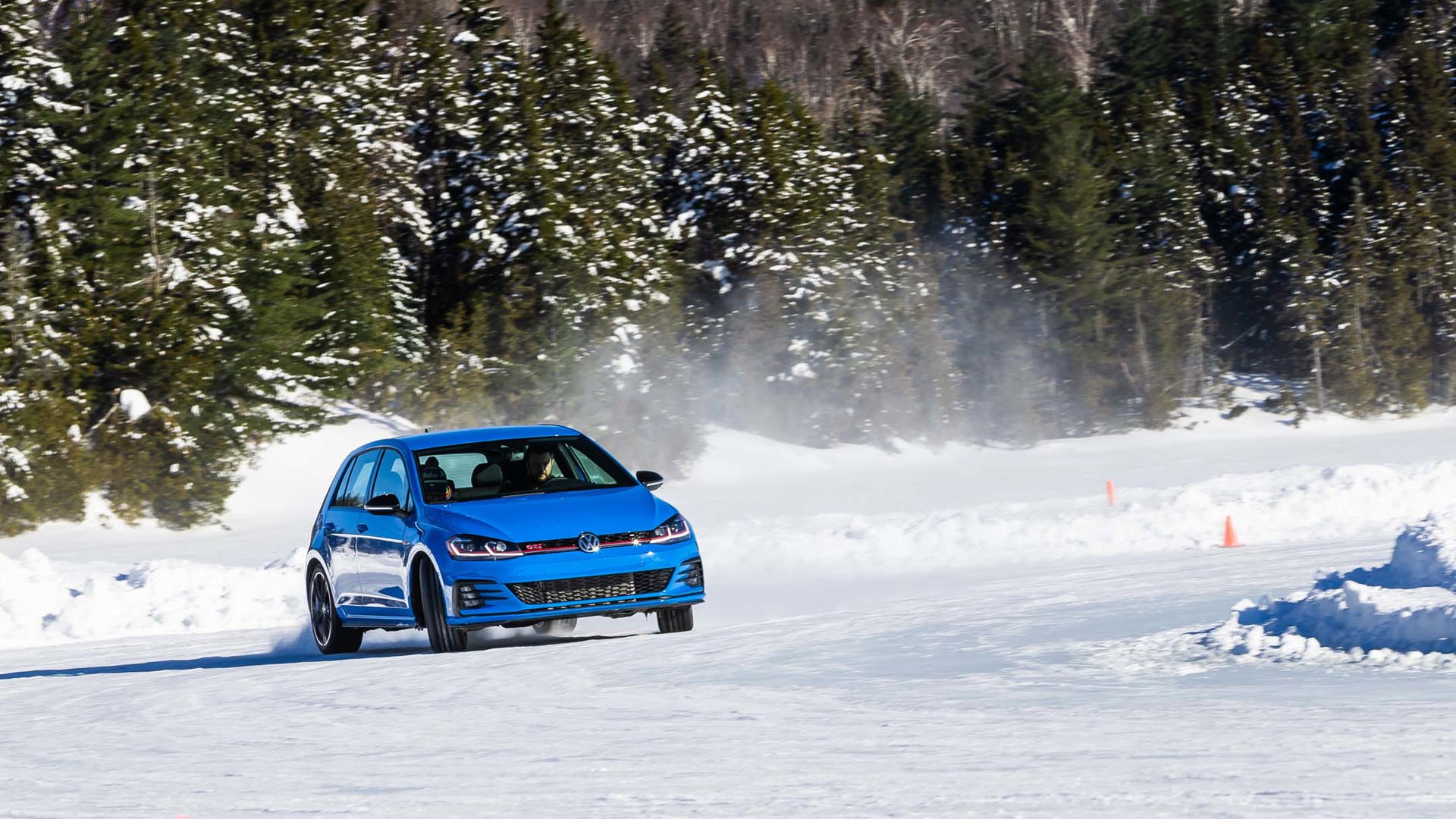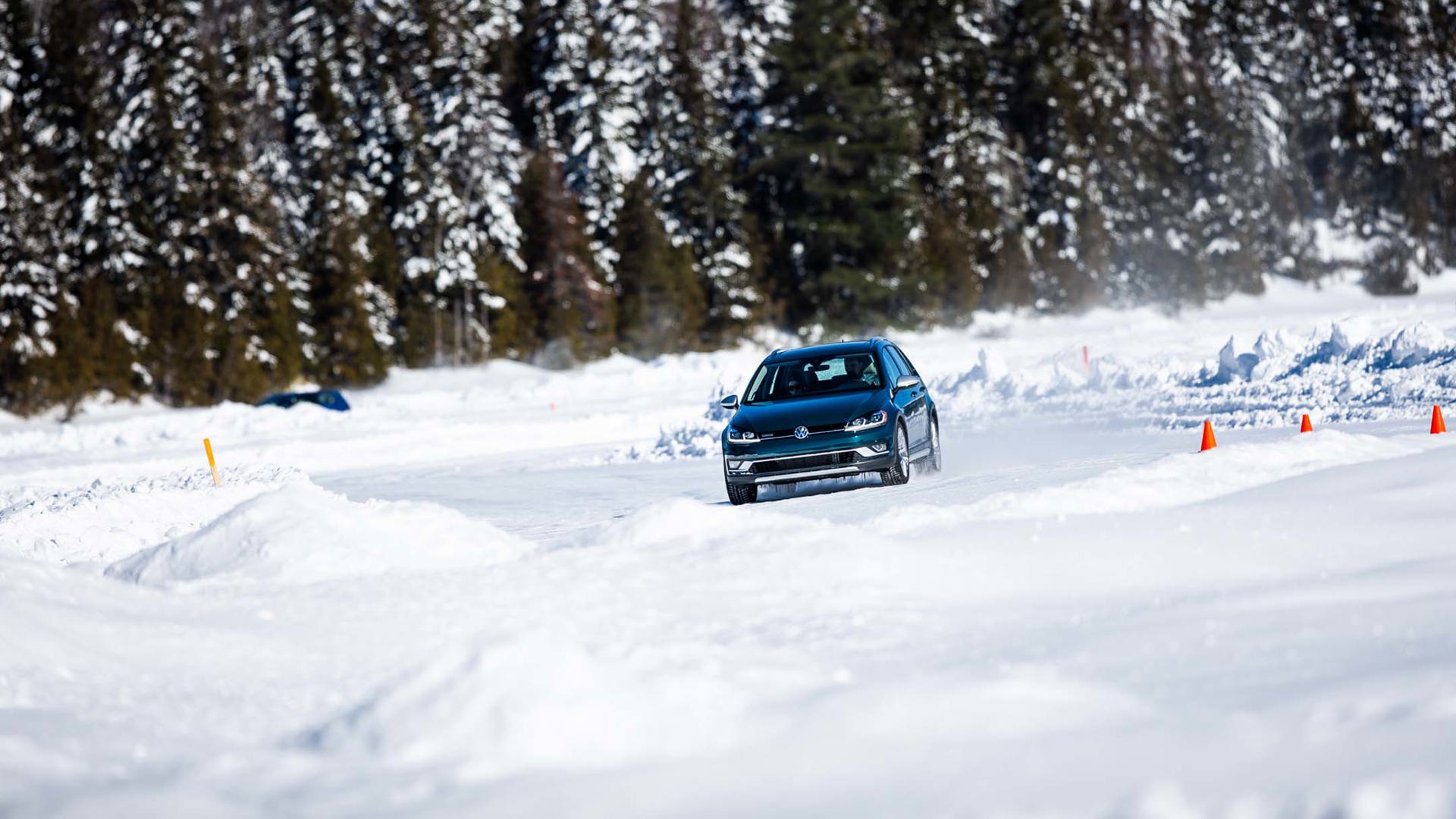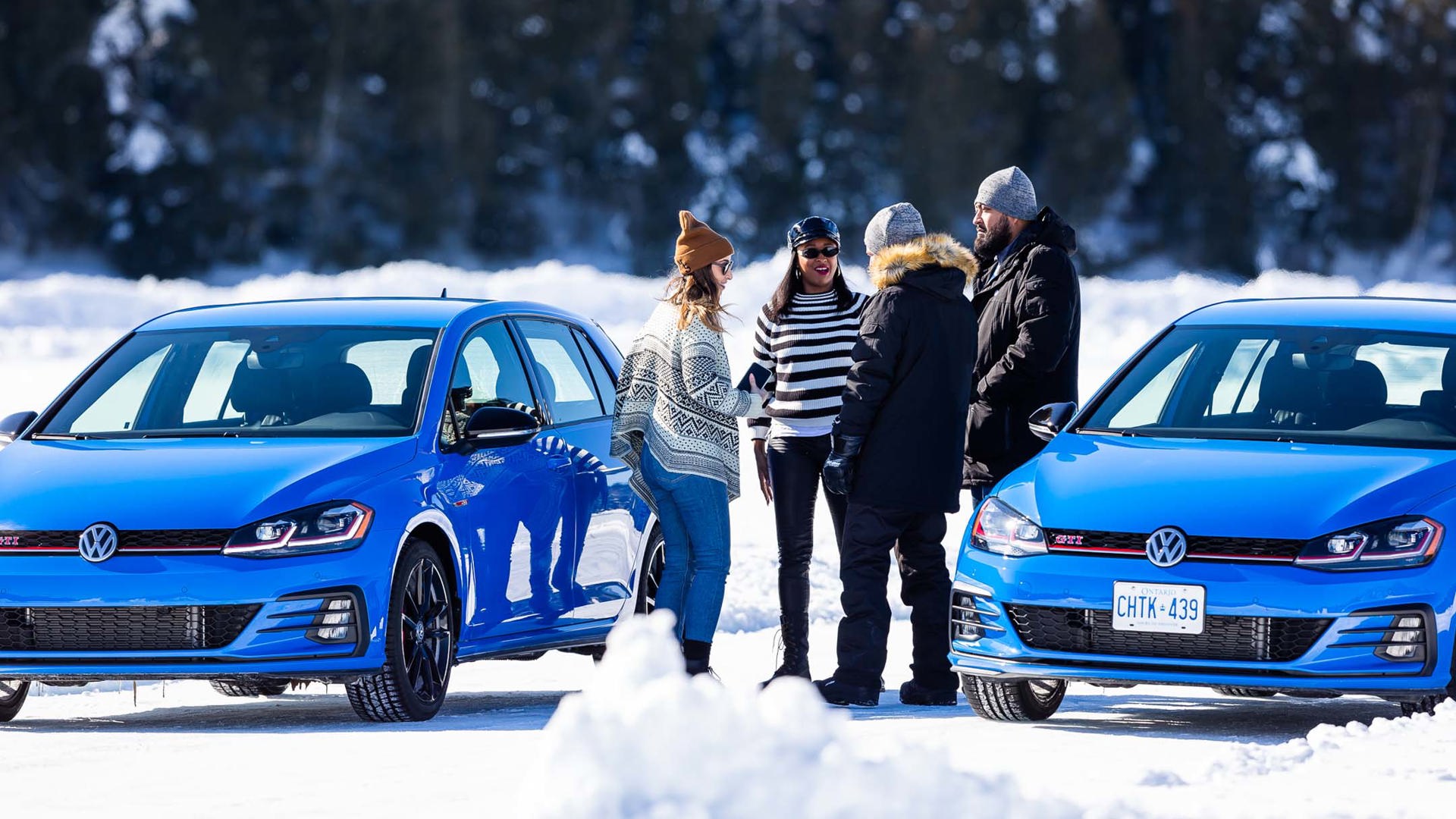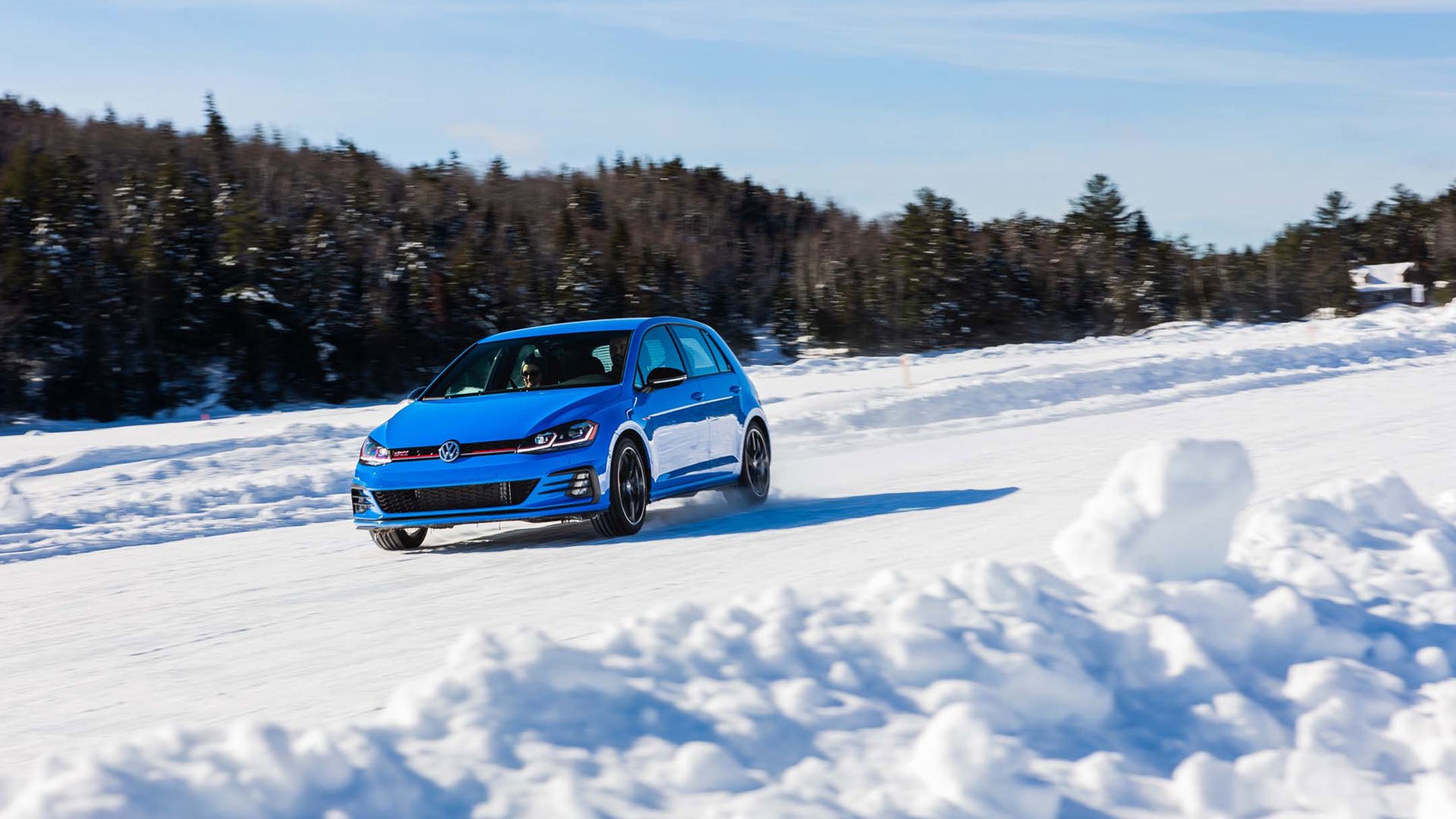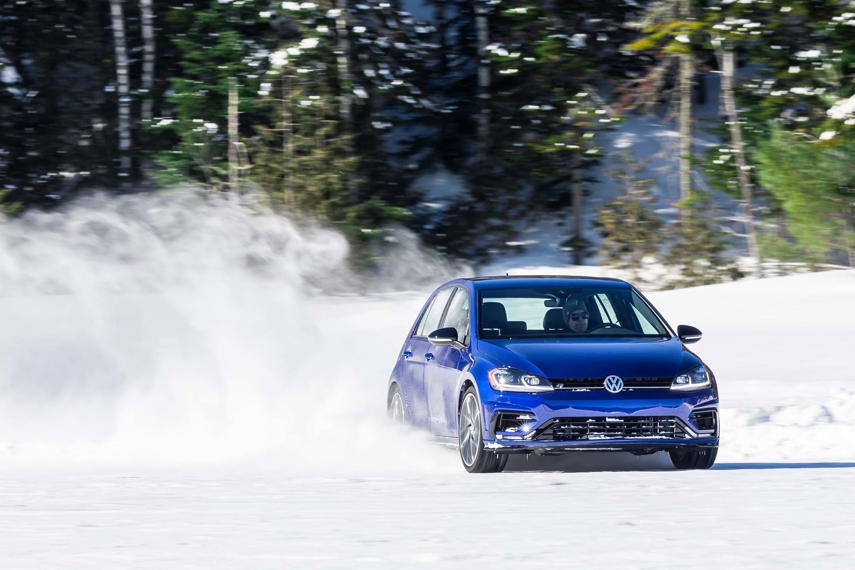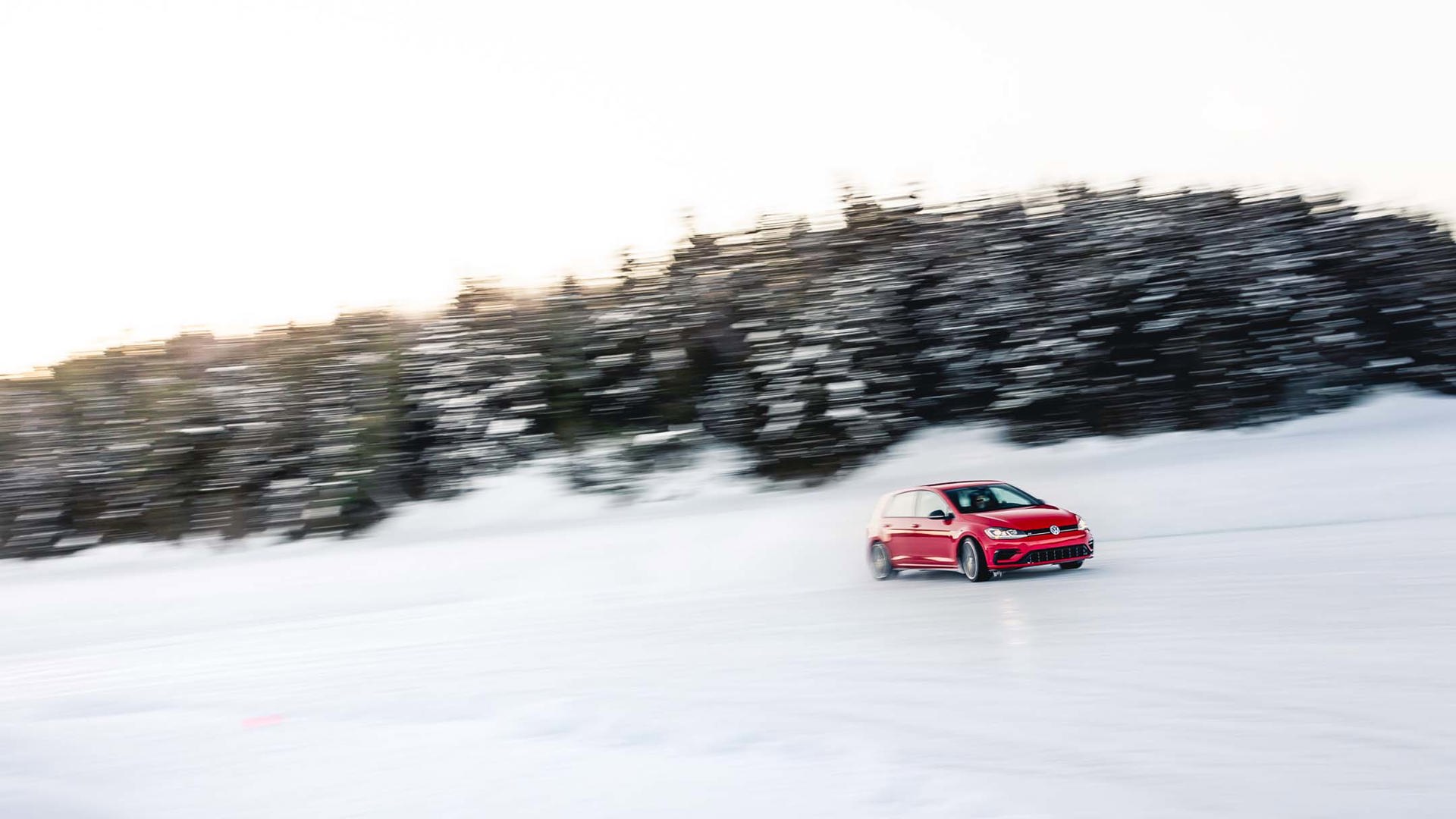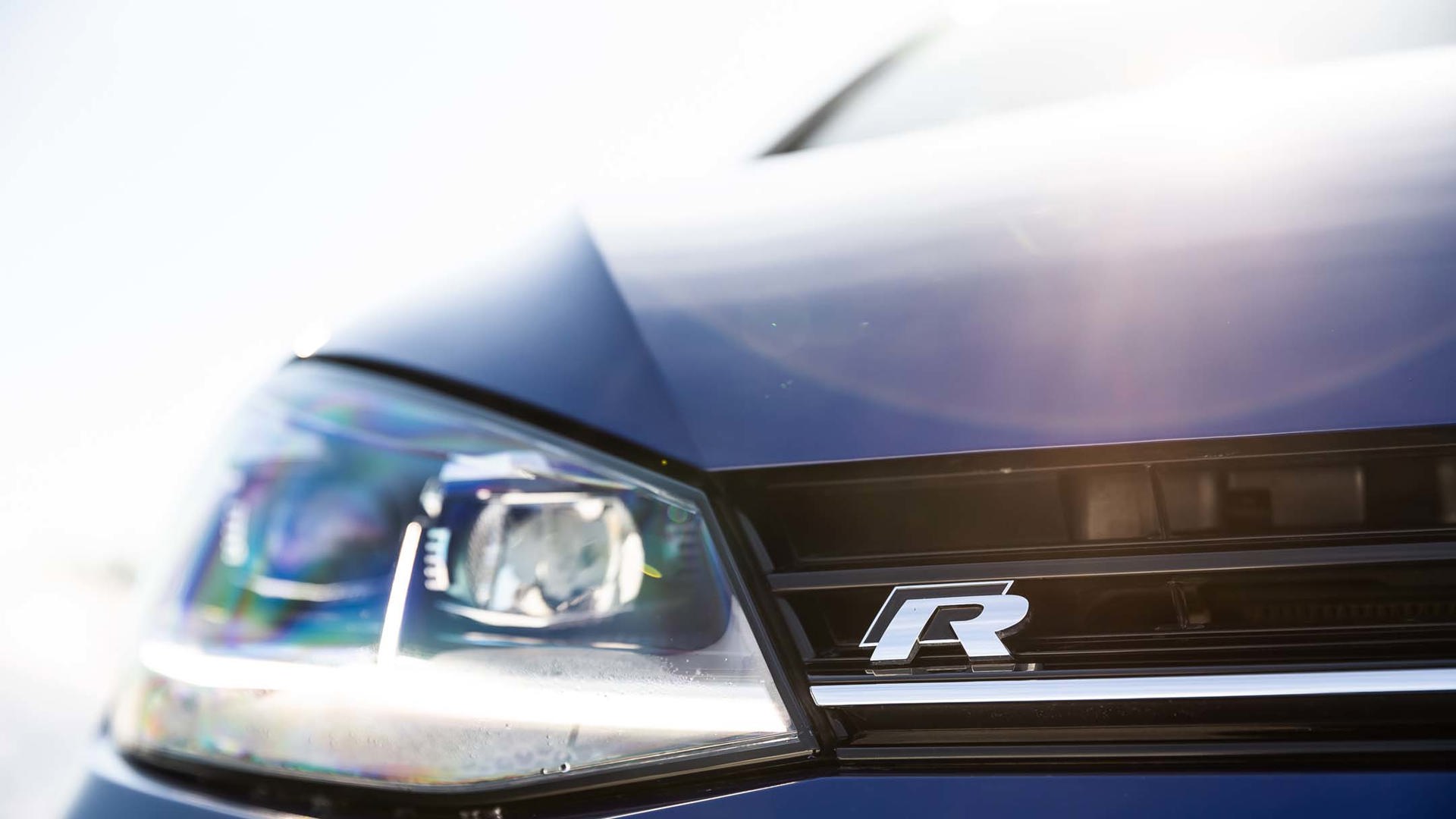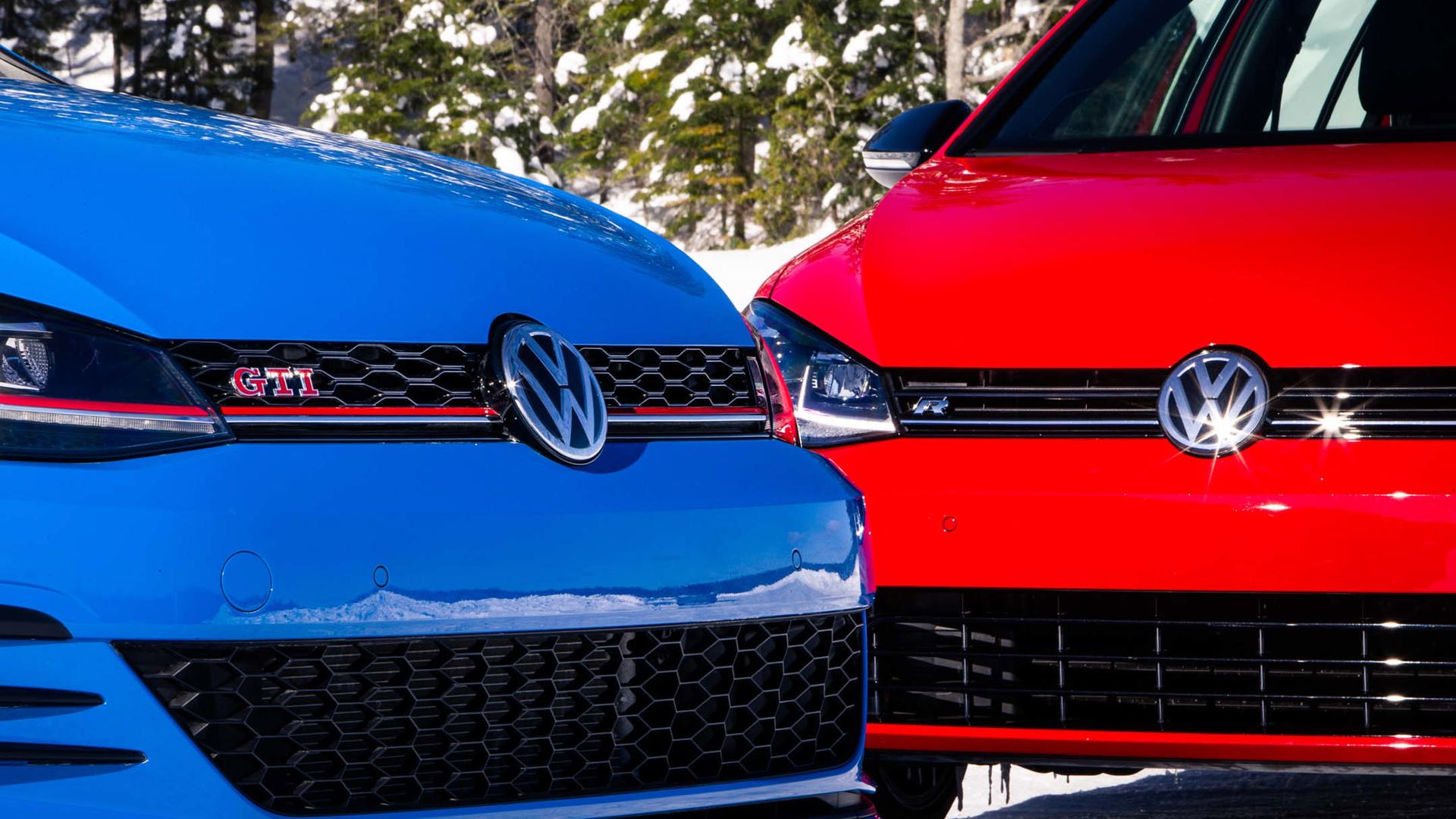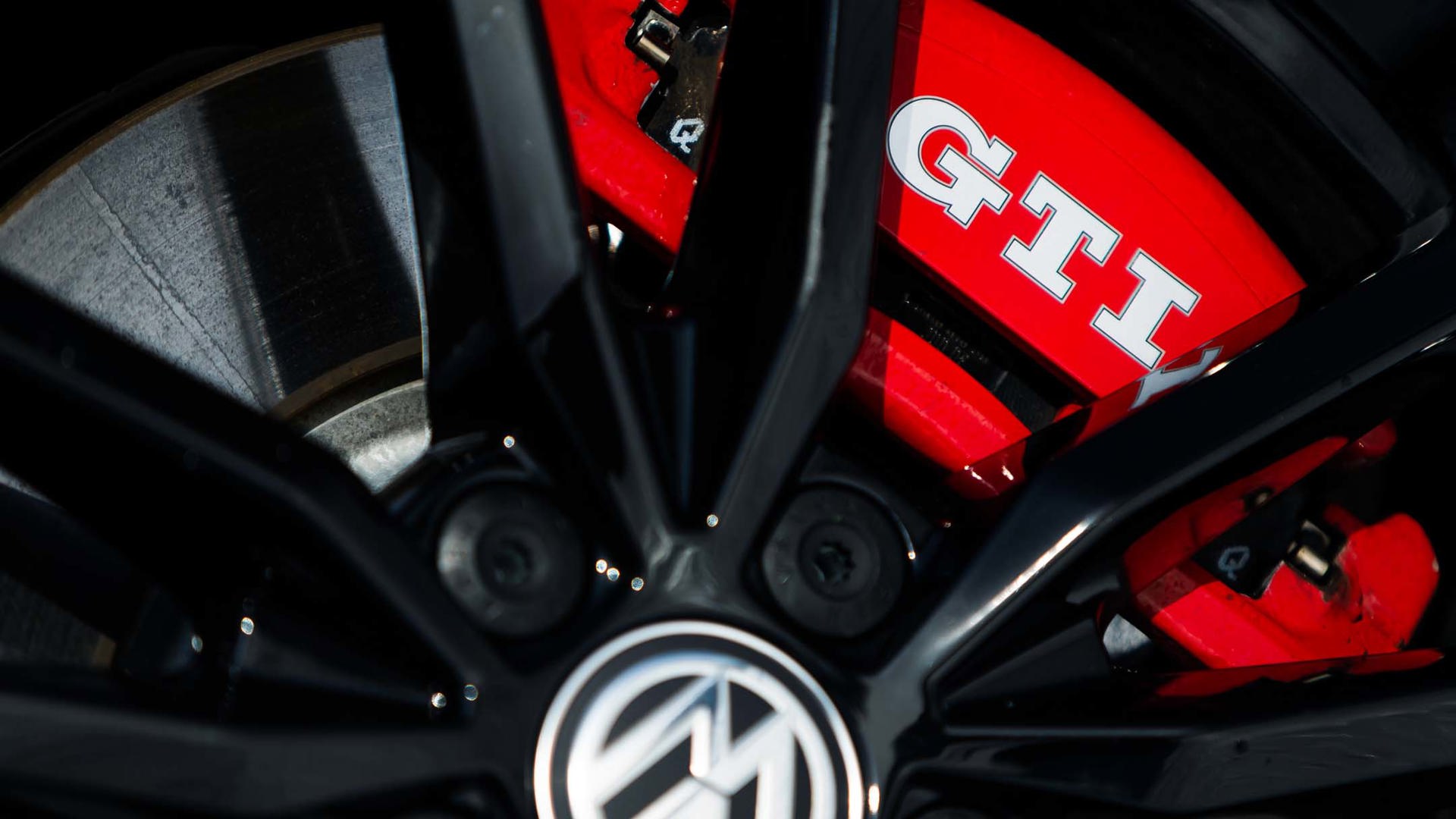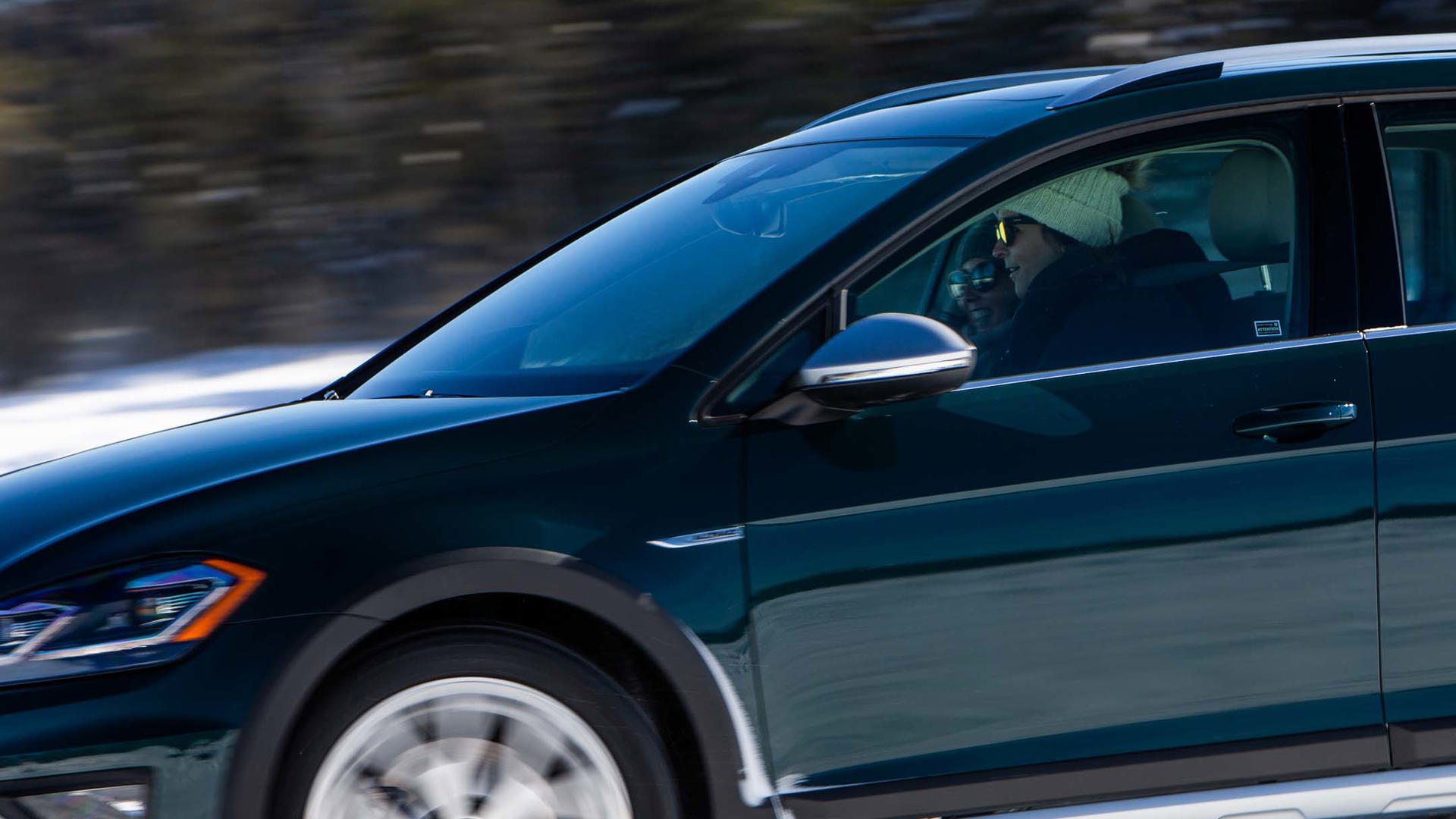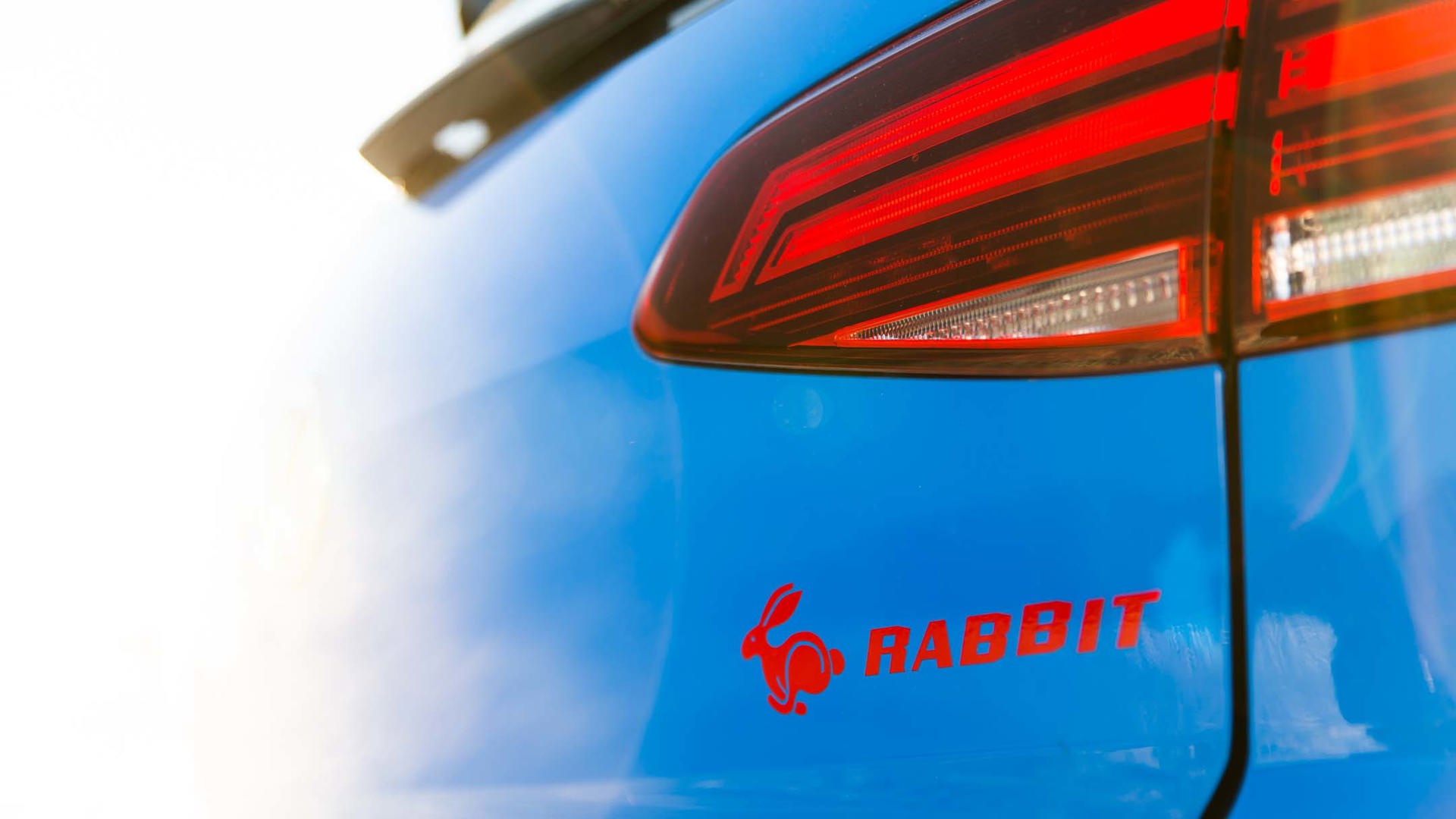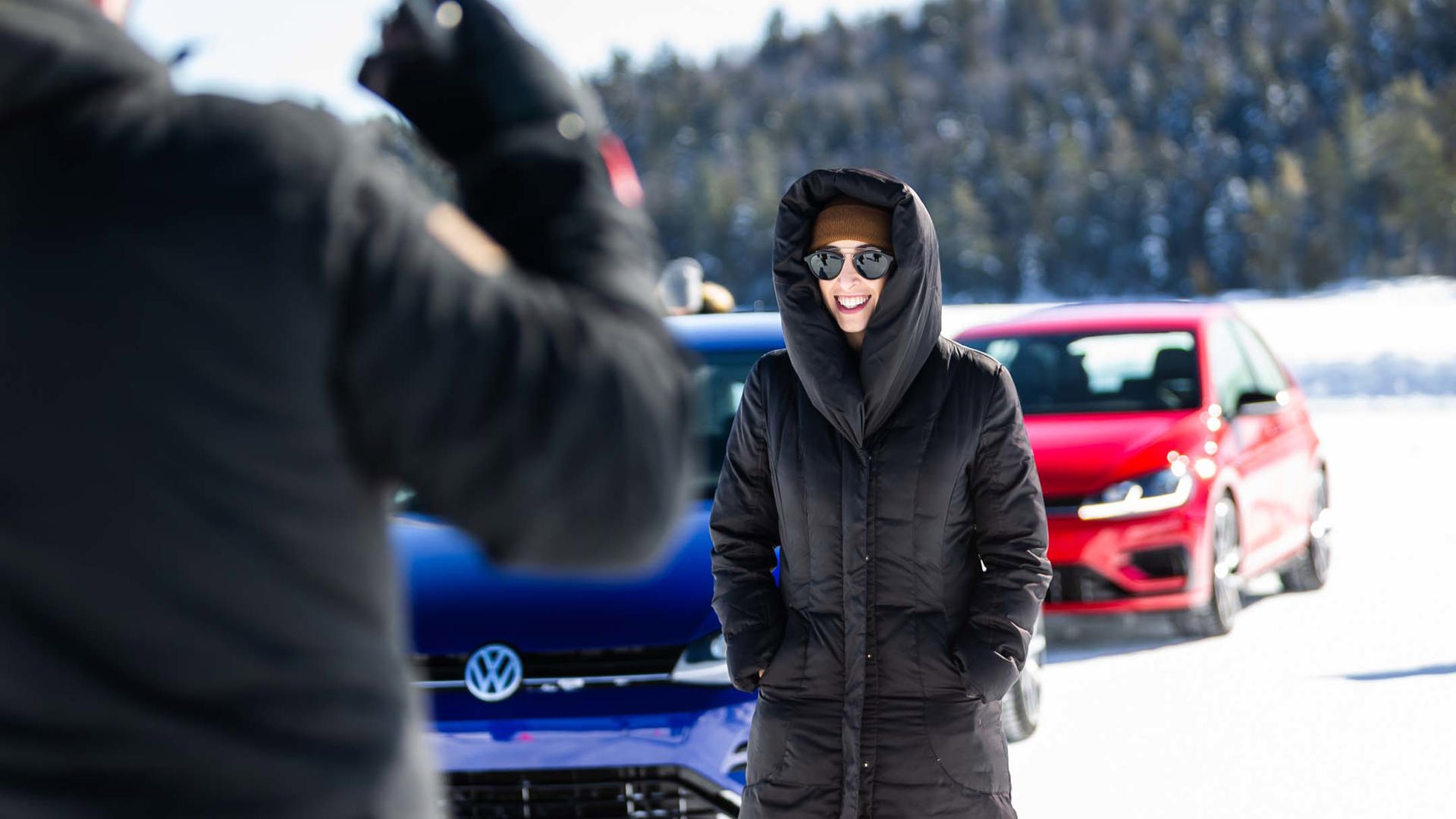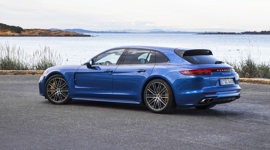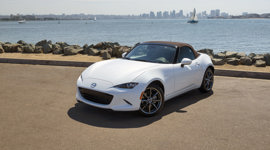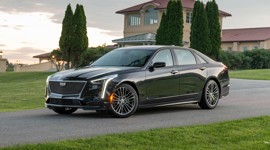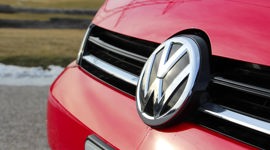Photography by Volkswagen Canada / Lenssen Photo
LAC SACACOMIE, QC – At last, it’s my turn behind the wheel, and I enthusiastically press the throttle; only to suddenly become Bambi, venturing out onto the ice for the first time. My previous trips on the makeshift driving circuit on the frozen surface of Lac Sacacomie had been while piloting a Golf Alltrack, and the surefooted ease with which I navigated the road course had ill-prepared me for tackling the same exercise in a GTI. Sure, both Volkswagens happen to be Golfs, but one is equipped with an all-wheel drive system, the other is front-wheel drive, meant for skipping happily across well-paved curves. Which is not to say it wasn’t capable of going where you point it, it just took a little more skill and attention to keep it out of the snowbanks, while the Alltrack took to the ice like an NHL hopeful.
Volkswagen’s all-wheel drive setup, essentially a Haldex electronic multi-plate clutch, re-branded as “4Motion”, was equipped on all available testers, with the exception of the Golf GTI. It’s an on-demand system with a front-wheel-drive-only default for fuel economy, that acts within milliseconds when conditions warrant. Unlike many systems, which send power to whichever wheel is experiencing slippage, 4Motion uses predictive sensors to determine where power is needed – before slippage occurs. We’d already taken a convoy of Tiguans and Alltracks through several miles of what were little more than widened snowmobile trails, snowdrifts towering over our heads, to demonstrate the 4Motion capabilities when combined with the Offroad and Snow drive modes.

Unassuming as it looks, the ultimate, suburban commuter-mobile, the Golf Alltrack was an impressive performer on the slick surface. The all-wheel drive system and longer wheelbase made it a lot more stable through the tight turns, torque imperceptibly being driven to selected wheels front or back, from side to side, or even through the rear wheels only. The cars have different drive modes: Normal, Eco, Sport, which change the responsiveness of throttle, transmission, engine, and traction control. We’re driving this exercise with the traction control off, which lets us induce oversteer to bring the rear end around – the fastest and most fun way to negotiate a tight turn but probably not recommended for public roads where predictable understeer is the safer if a skid does occur. I’m able to pick the fastest line through the cones without too much drama, and easily caught up to the driver who’d started half a lap earlier in the GTI. Fun? Absolutely – but more importantly, the system inspires confidence in drivers who just want to stay safe on the roads throughout the Canadian winter.
On ice, the Golf GTI is a completely different species. Cherished icon of the tuner set, the GTI with its lively handling shines on tight twisty roads. It commands 220 hp and also a power and weight advantage over the heavier Alltrack and its 170.
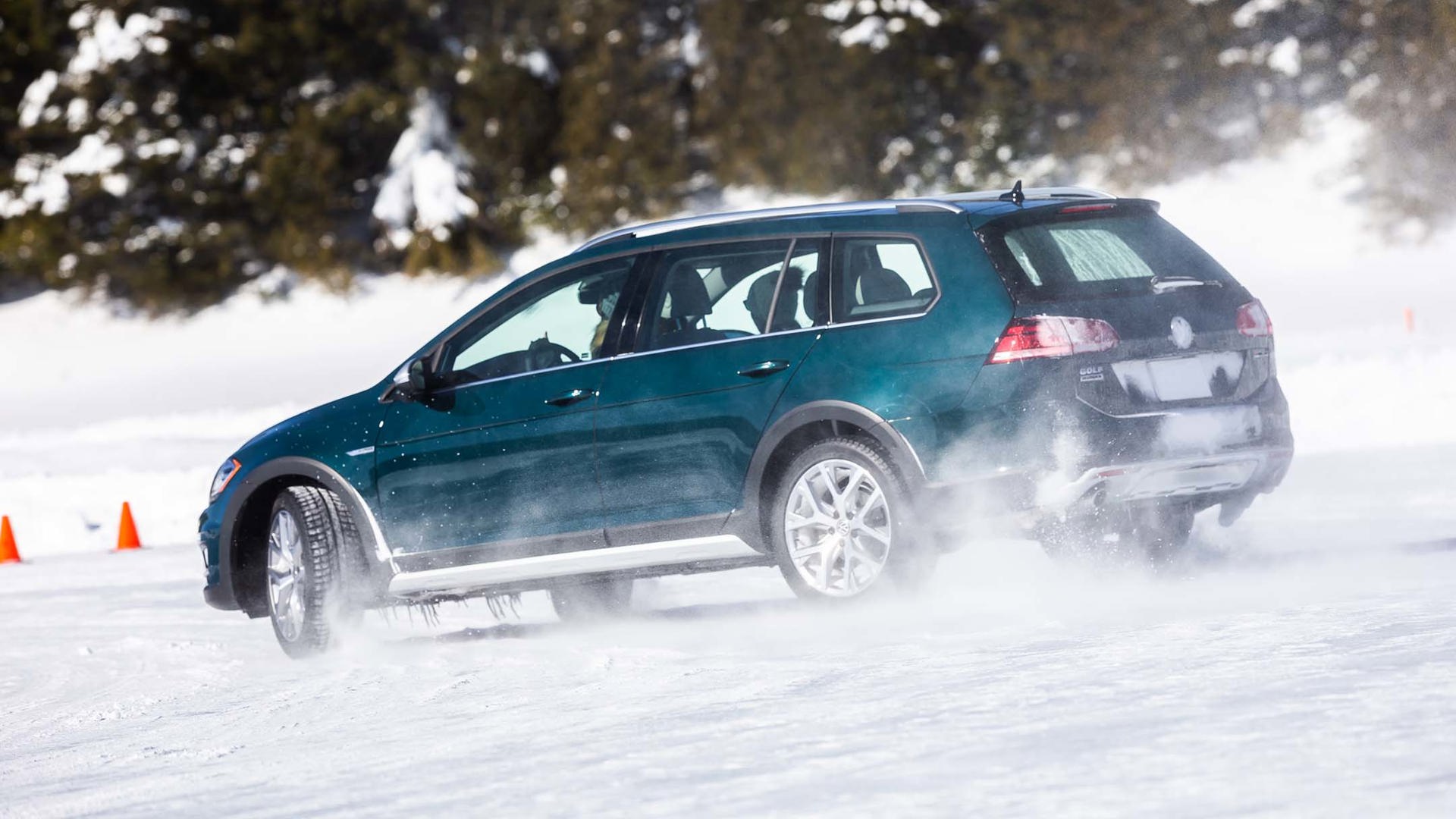
But the first lap over the slick surface felt like skating on glass in flat-soled dress shoes. By the second lap, I’d searched out the rough, or snow-covered patches where the tires could gain some purchase, as it was a much faster and smoother route than driving the proper racing line. Smooth inputs – especially through the steering wheel – were paramount to keep the car on an even keel and not upset its weight balance.
That lesson over, we headed to a skid pad – a giant donut laid out on the lake’s surface. The ice driving instructors had a decidedly evil bent. “Ever try curling?” they asked. “Because we polished the surface here, so basically, you’ll be driving on a curling rink.” A pair of gleaming Golf R, one red, one blue, awaited us.
Ominously, there was a load groan and a sharp crack, as the many layers of ice shifted beneath our feet – prompting one driver to quickly take refuge in one of the cars. I’m no physics major, but felt pretty confident that my 125 lb stood a better chance of remaining above the ice than a 3,000 lb car.
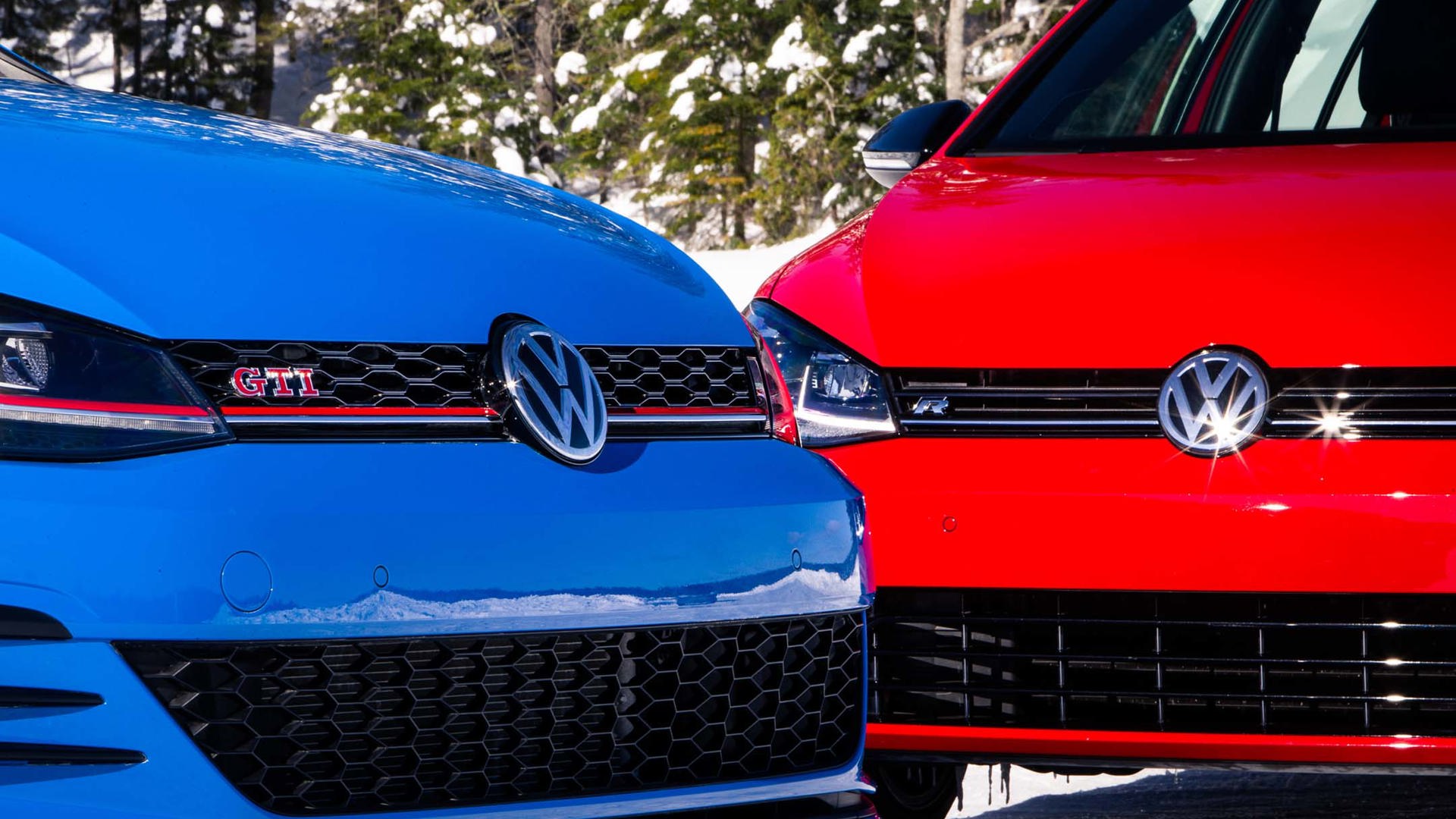
With 292 hp, the top-spec Golf R has 72 ponies over the GTI, but it also boasts standard 4Motion AWD. The object of this exercise is to drive around the circle, steadily increasing speed until the car begins to lose grip – at which point through a combination of throttle and steering we’d induce “drift” with the ultimate goal of maintaining it throughout the circle. This is a lot harder than it sounds. With a rear-wheel drive vehicle, the driver can usually control the drift by “counter-steering” (turning the wheel opposite to the intended direction) and applying the throttle. A front-bias car requires a lot more finesse with the steering wheel, and knowing precisely when to hammer the throttle and when to give it a light feather. Normally, the traction control would intervene when it senses such extreme steering angle and slippage, but with the nannies shut off, the car was free to rotate. I’ve easily accomplished a full circle before in rear-wheel-drive cars but this was a whole different ballgame. But I do take some pride in being the first one to perform a complete 360, and without losing a beat, complete the circle.
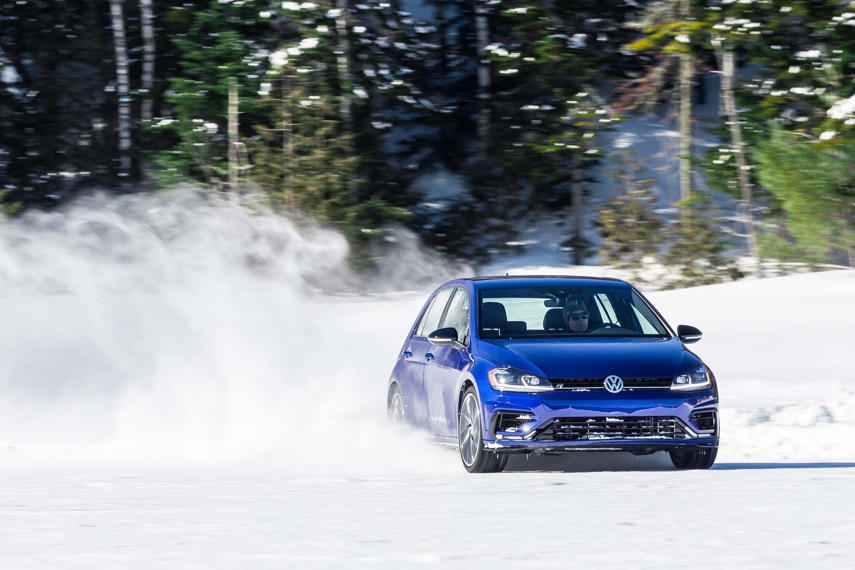
Which is safer has been a long and ongoing debate when considering the merits of AWD vs FWD during winter driving. I’ll take the humblest FWD beater equipped with good winter tires over the toughest 4x4 with all-seasons any day. Equally clad, the AWD car has a grip and power distribution advantage that can help avoid being stuck in deep ruts, and as we discovered, instantly find the best traction on a slippery surface with any of its four wheels. It’s important not to be lulled into a false sense of invulnerability – since even the most sophisticated all-wheel drive system cannot stop any faster than a basic FWD with proper winter tires.
Traction control and torque-distributing all-wheel drive systems may be considered thrill-killers for enthusiasts who like hanging the tail out. But they’re life-saving technology for the average driver whose main concern is staying safe through the Canadian winters.
